Israel-Hamas Ceasefire and Hostage Release Deal

- 14 Jan 2025
In News:
Israel and Hamas have agreed on a Gaza ceasefire and hostage release deal after 15 months of war.
Key Highlights:
Ceasefire Agreement Details:
- Location: The deal was brokered in Doha, Qatar.
- Approval Process: The deal must be approved by Israel’s Cabinet to take effect.
- Mediators: The agreement was negotiated by Qatar, Egypt, and the United States, with their involvement ensuring the implementation of the deal.
Phases of the Deal:
- First Phase (42 Days):
- Release of 33 hostages by Hamas, including women, children, and elderly people.
- Hostage Exchange: Hostages will be exchanged for Palestinian prisoners in Israeli jails.
- Gaza Ceasefire and Withdrawal: Israeli forces will gradually withdraw from Central Gaza and move to the borders.
- Return of Displaced Palestinians: Displaced Palestinians will be allowed to return to Northern Gaza.
- Humanitarian Aid: 600 humanitarian aid trucks will be allowed into Gaza daily.
- Second Phase:
- Hostage Release: Negotiations will begin for the release of remaining hostages.
- Full Israeli Troop Withdrawal: Israel will fully withdraw its forces.
- Third Phase:
- Reconstruction of Gaza: Overseen by Egypt, Qatar, and the United Nations.
- Reopening of Border Crossings: For movement in and out of Gaza.
- Return of Hostage Bodies: Return of any bodies of hostages who died.
Background of the Israel-Hamas Conflict:
- Start: On October 7, 2023, Hamas launched an attack on Israel, called Operation Al-Aqsa Flood, causing significant casualties.
- Israeli Response: Israel launched Operation Iron Sword in retaliation.
- Casualties: The conflict resulted in 46,707 Palestinian deaths, mostly civilians, and 1,210 Israeli deaths.
About Gaza Strip:
- Location: A Palestinian enclave on the Mediterranean Sea, bordered by Israel and Egypt.
- Administration: The Gaza Strip is governed by Hamas since 2006.
- Movement Restrictions: Israel controls air space and shoreline, imposing restrictions. Egypt controls one border and also restricts movement.
Gaza Truce Deal:
- Nature: A proposed ceasefire to end the ongoing conflict.
- Primary Parties: Israel and Hamas.
- Supporting Nations: United States, Qatar, and Egypt.
- Significance:
- Aims to stop fighting and address the humanitarian crisis in Gaza.
- Potential to influence regional stability and Israeli politics.
- Marks an important moment in U.S. diplomacy under the Biden administration.
India’s Recalculated Coastline
- 09 Jan 2025
In News:
India’s coastline has grown significantly over the past five decades, now extending 11,098 km in 2023-24, compared to 7,516 km in 1970. This marks an increase of 47.6% in just over five decades, attributed to a more precise methodology for measuring coastlines.
Key Factors Behind the Growth:
New Methodology for Measuring Coastlines:
- The old methodology used straight-line distances to measure the coastline, a method that didn't capture the complexity of India’s coastlines.
- The updated approach incorporates bays, estuaries, inlets, and other geomorphological features, offering a more accurate and detailed representation of the coastline.
- Advanced technologies like geospatial mapping have been used to ensure greater precision.
State-wise Recalculated Coastline Changes:
- Gujarat:
- Old coastline (1970): 1,214 km
- New coastline (2023-24): 2,340 km
- Growth: The largest absolute increase in coastline, nearly doubling its size.
- West Bengal:
- Old coastline: 157 km
- New coastline: 721 km
- Growth: A dramatic 357% increase, marking the highest percentage rise.
- Tamil Nadu:
- Old coastline: 906 km
- New coastline: 1,068 km
- Growth: Revised length now exceeds Andhra Pradesh’s coastline, which was 1,053 km.
- Puducherry:
- Old coastline: No major shift, but the updated data shows a contraction of 4.9 km (-10.4%), due to erosion and recalculations.
- Kerala:
- Old coastline: Relatively small increase of 30 km (5%), the smallest among the states.
Notable Observations:
- Andhra Pradesh is developing new ports like Ramayapatnam, Krishnapatnam, and Kakinada Gateway, aiming to boost economic growth and employment by leveraging its expanding coastline.
- The recalculated coastline helps in better maritime planning, focusing on port development, tourism, biodiversity conservation, and coastal erosion.
Impact of Coastline Expansion:
- Economic Growth:
- Coastal states, particularly Gujarat and West Bengal, benefit from an expanded coastline that improves maritime trade, port infrastructure, and tourism.
- The expansion supports industrialization, with growing logistics and transportation activities along the coast.
- Environmental Considerations:
- The new data aids biodiversity conservation, helping to track coastal erosion and accretion (land buildup), especially in areas like the West Coast.
- Understanding these changes is essential for disaster preparedness and sustainable coastal management.
- Coastlines of Emergence and Submergence:
- Emerging Coastlines: Land rising due to uplift or falling sea levels, such as along the Tamil Nadu Coast.
- Submerged Coastlines: Land that has sunk or been submerged due to rising sea levels, particularly noticeable along parts of Kerala’s coast.
Geographical Significance of the Expanded Coastline:
- India’s coast touches three major bodies of water: the Bay of Bengal (east), the Indian Ocean (south), and the Arabian Sea (west).
- The expansion reflects more than just geography—accurate coastline data is crucial for policy planning, maritime security, and resource management.
Year of Artificial Intelligence

- 05 Jan 2025
In News:
The All India Council for Technical Education (AICTE) has declared 2025 as the "Year of Artificial Intelligence" (AI), aiming to empower over 14,000 AICTE-approved colleges and benefit 40 million students. This initiative aligns with the Prime Minister’s vision to make India a global leader in AI and technology.
Key Objectives and Features of the AICTE AI Initiative:
- Positioning India as a Global AI Leader:
- Empowering students with AI skills to drive innovation and lead in the emerging AI-driven economy.
- Preparing India’s workforce for the technological advancements of the future.
- Core Elements of the AICTE AI Initiative:
- AI Affirmation Pledge: Institutions will adopt and display an AI Affirmation Pledge, focusing on innovation, ethics, and education in AI.
- Comprehensive AI Integration:
- Introducing interdisciplinary AI courses and research programs.
- Setting up AI labs in collaboration with industries to meet global standards.
- Promoting ethical AI practices with societal benefits in focus.
- AI Awareness Campaign:
- “AI for All: The Future Begins Here” campaign includes workshops, hackathons, and guest lectures.
- Formation of student-driven AI chapters to foster innovation and research.
- Faculty Development & Industry Partnerships:
- Workshops and certification programs for faculty to improve AI teaching.
- Collaboration with companies like Adobe, CISCO, and IBM for student exposure through internships and mentorships.
- Recognition of Excellence: Institutions excelling in AI integration will be recognized, serving as role models for others.
- Action Plan for Institutions:
- All institutions are required to submit AI Implementation Plans by December 31, 2024. These plans will be evaluated by the AICTE Approval Bureau and exemplary submissions will be highlighted as benchmarks.
- Shaping India as a Global AI Leader:
- AICTE aims to revolutionize India’s education system and enhance its position in the global AI race, focusing on building a self-reliant workforce.
Additional Context on AICTE and its Role:
- AICTE Overview:
- A statutory body and national-level council under the Ministry of Education.
- Established in November 1945 as a national-level apex advisory body for technical education in India.
Government Initiatives to Support AI and Consumer Protection:
- AI and Consumer Protection:
- AI-driven tools launched to enhance consumer protection, such as the National Consumer Helpline, e-MAAP Portal, and Jago Grahak Jago mobile application.
- New guidelines for regulating deceptive marketing in e-commerce to ensure consumer confidence in the digital market.
- Tools like the e-Daakhil Portal for online complaint filing.
Impact:
- This initiative will have a far-reaching impact, involving more than 14,000 institutions and 40 million students nationwide, preparing them for leadership roles in AI and technology, and helping India secure its future in the global AI-driven economy.
Translocation of Tigers from Madhya Pradesh
- 05 Jan 2025
In News:
Madhya Pradesh to translocate 15 Tigers to Rajasthan, Odisha and Chhattisgarh.
Key Highlights of the Translocation:
- Scale of Translocation: Largest relocation of big cats from a single state in India.
- Approval: NTCA has approved the translocation of 15 tigers from Madhya Pradesh to Rajasthan, Chhattisgarh, and Odisha.
- Source Reserves:
- Bandhavgarh, Panna, Kanha, and Pench Tiger Reserves in Madhya Pradesh.
- Distribution Plan:
- Rajasthan: 4 tigresses.
- Chhattisgarh: 2 male tigers and 6 tigresses.
- Odisha: 1 male tiger and 2 tigresses.
- Funding: States receiving tigers will bear all expenses related to translocation.
Objectives of the Translocation:
- Enhance Tiger Conservation: Reintroduce and bolster tiger populations in recipient states.
- Population Management: Relocate tigers to areas with suitable habitats to alleviate territorial disputes in overpopulated reserves.
- Genetic Diversity: Introduce new individuals to isolated tiger groups to prevent inbreeding and support long-term species survival.
About Kanha, Bandhavgarh, and Pench Tiger Reserves:
- Kanha Tiger Reserve:
- Location: Maikal range of the Satpura Mountains.
- Significance: Largest national park in Madhya Pradesh.
- Distinct Feature: First tiger reserve in India with an official mascot, ‘Bhoorsingh the Barasingha’.
- Flora and Fauna: Rich biodiversity with Royal Bengal Tigers, leopards, and the IUCN Vulnerable species, Barasingha.
- Bandhavgarh Tiger Reserve:
- Location: Between Vindhyan and Satpura ranges in Umaria district, Madhya Pradesh.
- Significance: Known for one of the highest densities of Royal Bengal Tigers in India.
- Historical Link: The ancient Bandhavgarh Fort, linked to the legend of Lord Rama and Lakshmana.
- Pench Tiger Reserve:
- Location: Spans Seoni and Chhindwara districts in Madhya Pradesh, extends into Maharashtra.
- Significance: Inspiration for Rudyard Kipling’s The Jungle Book.
- Flora and Fauna: Includes teak, saag, mahua forests; tigers, leopards, wild dogs, and gaur are key species.
Tiger Translocation Project Overview:
- First Project:
- Initiated in 2018, two tigers relocated from Kanha and Bandhavgarh to Satkosia Tiger Reserve in Odisha.
- Main Objectives:
- Reintroduce Tigers: In areas where they have been extirpated or extinct.
- Alleviate Territorial Disputes: Overpopulated reserves need additional tigers to reduce human-animal conflict.
Benefits of Translocation:
- Ecological Balance: Restores predator-prey dynamics in underpopulated reserves.
- Human-Animal Conflict Mitigation: Reduces conflict in overcrowded reserves.
- Rewilding Landscapes: Revives areas where tigers were locally extinct.
Concerns Associated with Translocation:
- Local Community Protests: Villagers fear tigers will pose a threat to their safety.
- Territorial Disputes: New tigers may face conflict with resident tigers.
- Poor Forest Management: Inadequate prey augmentation and habitat management may hinder success.
Madhya Pradesh’s Role in Tiger Conservation:
- Largest Tiger Population: Madhya Pradesh hosts the largest number of tigers in India, with 785 tigers as per NTCA’s 2022 report.
- Tiger Reserves: The state is home to nine tiger reserves, including the newly notified Madhav Tiger Reserve in Shivpuri.
- Translocation Strategy: Madhya Pradesh’s involvement helps reduce local tiger population pressure and contributes to broader conservation efforts across India.
Inter-State Tiger Translocation Goals:
- Reinforcement and Reintroduction: Introduce tigers into areas historically part of their range but from which they have been extirpated or extinct.
- Genetic Diversity: Introduce new tigers to isolated populations to maintain long-term population health.
Open Data Kit (ODK) Toolkit

- 04 Jan 2025
In News:
- The Comptroller and Auditor General (CAG) of India has deployed the Open Data Kit (ODK) platform to enhance transparency in government spending and improve accountability in the delivery of government schemes.
- The toolkit is being used for designing, collecting, and managing data relevant to audits.
Key Highlights:
Objective:
- Enhance transparency in public spending.
- Improve accountability in government schemes and projects.
- Collect real-time beneficiary feedback to aid audit planning and identify areas needing additional review.
Key Features:
- End-to-end encryption: Ensures secure data management.
- Integration with CAG’s Operating System (OIOS): Facilitates seamless analysis and management of data.
- Multi-language support: Allows for surveys in multiple languages, making it more accessible to diverse beneficiaries.
- User-friendly interface: Simplifies the design and management of data collection processes for auditors.
Usage and Applications:
- Beneficiary surveys are a key tool for gathering data, helping CAG identify problem areas in government schemes.
- The ODK toolkit was recently deployed in audits of AIIMS institutions in Mangalagiri (Guntur) and Bibinagar (Hyderabad) to assess patient satisfaction and gather evidence for performance reviews.
Working Process:
- Surveys are designed on the ODK platform and deployed to beneficiaries.
- Data is collected in real-time and analyzed using the OIOS system to generate actionable insights for audits.
- Beneficiary feedback is used to evaluate scheme delivery and improve efficiency.
Significance:
- Facilitates data-driven decision-making in audits, ensuring that audits are more transparent and evidence-based.
- Improves the citizen-centric evaluation of government schemes by gathering direct feedback from beneficiaries.
- Enhances the performance review of key institutions like AIIMS, contributing to better service delivery.
- The introduction of the ODK toolkit is part of the CAG’s efforts to use digital tools for better governance and accountability in the public sector. This also aligns with the growing trend of using technology for governance and auditing.
ASI Decodes Sanskrit Inscription Found in Pakistan-Occupied Kashmir (PoK)
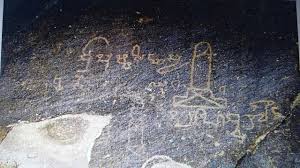
- 29 Dec 2024
In News:
An ancient Sanskrit inscription found in Gilgit (PoK) was decoded by the Archaeological Survey of India (ASI).
About the Inscription:
- Location:
- Gilgit (PoK): Written in Brahmi script, dating back to 4th century CE.
- Peshawar (Pakistan): Written in Sharada script, dating to 10th century CE.
- Details of Gilgit Inscription:
- Mentions Pushpasingha, who installed a Mahesvaralinga for the merit of his guru.
- Written in Brahmi script, which was prevalent during the 4th century CE.
- Religious Context: Indicates significant religious connection, particularly with Shaivism.
- Details of Peshawar Inscription:
- Fragmentary: Engraved on a slab.
- Written in Sharada characters (10th century CE).
- Mentions Buddhist Dharini (chants), particularly referring to Da (Dha) rini in line six.
- The inscription is partially damaged, and further details are unclear.
- Earlier Discoveries:
- This is not the first Sanskrit inscription decoded from Pakistan. In the past, Sanskrit inscriptions have been found in various parts of Pakistan.
- Swat Valley: Known for numerous Buddhist rock inscriptions in Sanskrit using Nagari script, which were part of the Gupta Empire (circa 240–550 CE).
- Religious and Cultural Implications:
- The Gilgit inscription provides evidence of Shaivism as a prominent religious practice in the region during the 4th century CE.
- The Peshawar inscription suggests Buddhist influences, particularly related to Buddhist chants and rituals.
- Swat Valley's Role: The inscriptions found here highlight its importance as a center of Buddhist learning and cultural exchange.
Little Bunting
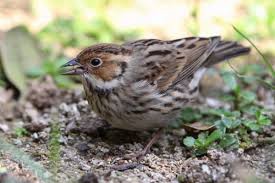
- 16 Dec 2024
In News:
Little Bunting recently spotted in Mount Abu, Rajasthan, a sighting previously unseen in the region.
About the Little Bunting:
- Scientific Name: Emberiza pusilla
- Family: Bunting family (Emberizidae)
- IUCN Red List Status: Least Concern
Distribution:
- Breeding Range: Far northeast Europe and northern Eurosiberia to the Russian Far East (taiga region).
- Migratory Pattern: Migrates to the subtropics during winter, with sightings in northern India, southern China, and northern Southeast Asia.
Physical Features:
- Size: Small bird, measuring 12–14 cm (4.7–5.5 inches).
- Coloration:
- White underparts with dark streaking on the breast and sides.
- Chestnut face with a white malar stripe, black crown stripes, and a white eye-ring.
- Fine dark border behind chestnut cheeks.
- Similarity: Resembles a small female reed bunting but with distinct black crown stripes.
Call and Song:
- Call: Distinctive "zik".
- Song: A rolling "siroo-sir-sir-siroo".
Habitat and Behavior:
- Typically found in agricultural areas, feeding on grains.
- Migration: Avoids extreme cold conditions, possibly due to climate change influencing its movement into Rajasthan.
Recent Sightings in India: Spotted in Gurugram, Chandigarh, northern Punjab, and now Rajasthan.
Conservation Significance: The sighting underscores the need to preserve forest areas and wetlands for migratory species like the Little Bunting.
African Swine Fever
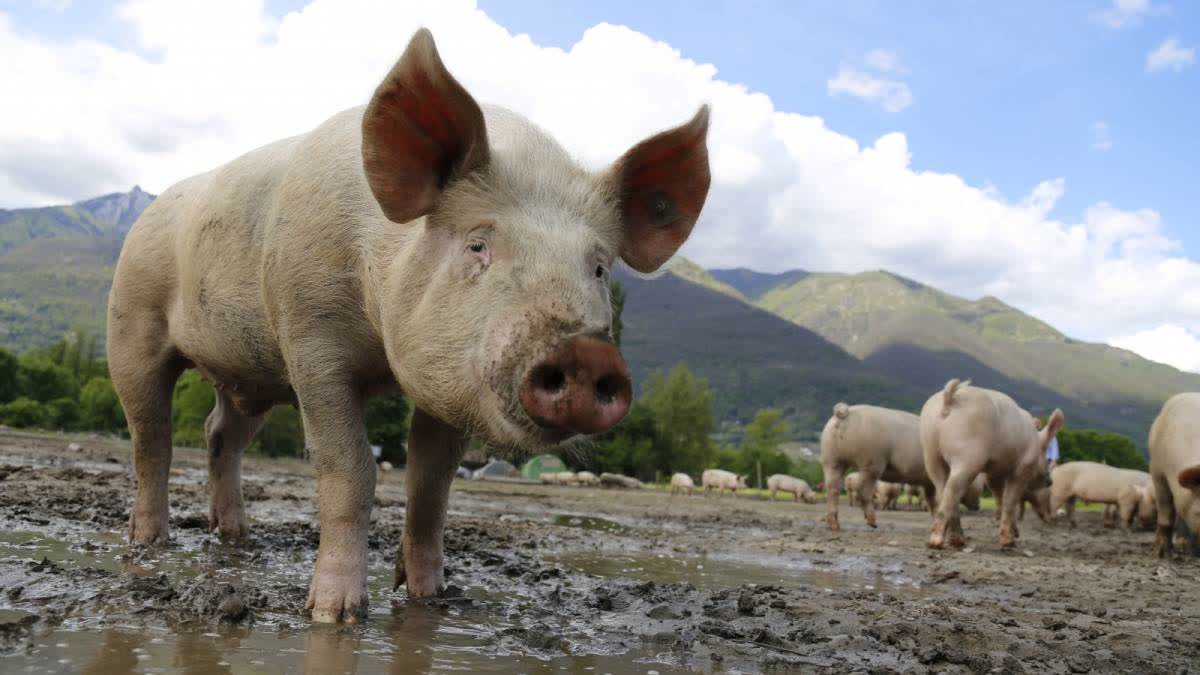
- 16 Dec 2024
In News:
African Swine Fever has been reported at two pig farms in Koottickal and Vazhoor grama panchayats in Kottayam district.
Action Taken:
- Culling of Pigs: All pigs in the affected farms and within a 1 km radius will be culled and disposed of according to Central Government guidelines.
- Infected Zone: A 1 km radius around the affected farms has been declared an infected zone.
- Surveillance Zone: A 10 km radius around the infected area has been designated a surveillance zone.
About African Swine Fever (ASF)
- African swine fever (ASF) is a highly contagious and hemorrhagic viral disease of domestic and wild pigs. It is a notifiable disease and its outbreak should be immediately reported to the higher authorities.
- ASF causes destructive effect on piggery due to high morbidity and mortality (up to 90-100 %). In India it was first confirmed in Arunachal Pradesh and Assam in February-March 2020.
- Currently, there is no effective vaccine available against ASF, so prevention by adopting strict biosecurity measures is the only way to prevent ASF.
CLINICAL SIGNS
- High fever (106-1080 F), lethargy and loss of appetite
- Increased respiration rate
- Blue-purple discoloration of skin of ears, abdomen and rear legs
- Discharge from the eyes and nose; bloody froth from the nose/mouth
- Constipation or bloody diarrhea
- Abortion
- Death of pigs in 6-15 days
Diagnosis: Confirmatory diagnosis in gov. laboratories
Desert Knight Air Combat Exercise
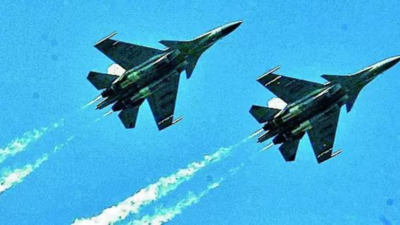
- 14 Dec 2024
In News:
India, France and UAE recently kicked off a major air combat exercise called “Desert Knight” over the Arabian Sea, strengthening trilateral defence cooperation and enhancing military interoperability amid the ongoing geopolitical churn.
Key Highlights:
- What It Is: A trilateral air combat exercise aimed at improving military interoperability and enhancing combat readiness among the participating nations.
- Nations Involved: India, France, and the UAE.
- Location: Conducted over the Arabian Sea, approximately 350-400 km southwest of Karachi.
- Aim of the Exercise:
- To strengthen trilateral defence cooperation among the three nations.
- To enhance combat skills and military interoperability of the air forces involved.
- Details of the Exercise:
- Duration: The exercise lasts for three days.
- The exercise involves large force engagement and intensive combat maneuvers in a realistic operational environment.
- Aircraft Involved:
- India: Deployed Sukhoi-30MKIs, Jaguars, IL-78 mid-air refuellers, and AEW&C (Airborne Early Warning and Control) aircraft from bases like Jamnagar.
- France: Deployed Rafale jets and other aircraft from Al Dhafra airbase.
- UAE: Deployed F-16 jets and other aircraft from Al Dhafra airbase.
Strategic Significance:
- The exercise is part of India’s efforts to build military interoperability with nations in the Persian Gulf region and strengthen defence ties with France and the UAE.
- Enhances combat readiness and strengthens cooperation against both traditional and non-traditional threats.
- Reflects the geopolitical shift and growing military cooperation in the Indo-Pacific region, especially in the context of China’s expansionist activities.
- Trilateral Framework: India, France, and the UAE launched a trilateral framework in 2022, focusing on areas like defence, technology, energy, and environment.
- Previous Exercises: In addition to Desert Knight, the countries also conducted their first trilateral maritime exercise in June 2023 to enhance cooperation in maritime security.
Broader Defence Relations:
- India-France: Long-standing strategic partnership with regular joint exercises like Shakti (army), Varuna (navy), and Garuda (air force).
- India-UAE: The defence relationship has grown significantly in recent years, with regular professional exchanges, combat exercises, and staff talks. India participates in the Desert Flag exercise at Al Dhafra airbase annually.
Markhor Spotted in North Kashmir's Baramulla
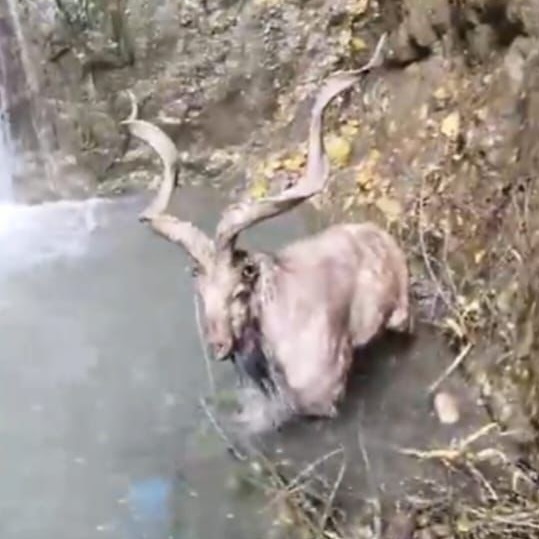
- 08 Dec 2024
In News:
Recently, a Markhor, a rare wild goat with spiral-shaped horns, was spotted in Noorkha village of Boniyar in Baramulla district, North Kashmir.The animal was seen near a waterfall in Noorkha, prompting locals to alert the authorities.
Key Highlights:
- The Markhor (Capra falconeri) is a large, wild goat species native to mountainous regions in Central and South Asia, including countries such as Pakistan, Afghanistan, India, and others.
- The species is considered endangered and is listed under Schedule I of the Wildlife Protection Act, 1972.
- The Markhor population in India is concentrated in areas like Shopian, Banihal Pass, Shamsbari, and Kazinag in Jammu and Kashmir.An estimated 300 Markhors live in Kashmir's dense pine and birch forests.
- Threats and Conservation Status:
- The Markhor faces threats due to human activities and natural factors, leading to a decline in its population.
- It is classified as 'Near Threatened' on the IUCN Red List and protected under the Indian Wildlife Protection Act and the Jammu and Kashmir Wildlife Protection Act.
- Significance of the Sighting:The sighting of the Markhor has excited both villagers and wildlife enthusiasts, as these animals are not typically found outside their natural habitats, particularly near human settlements.
World’s Oldest Wild Bird Lays Egg at 74 in Hawaii
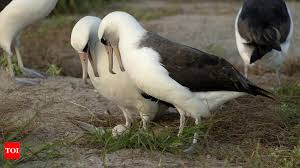
- 08 Dec 2024
In News:
Wisdom, the world’s oldest known wild bird, a Laysan albatross, has laid her estimated 60th egg at the age of 74. This remarkable event occurred at the Midway Atoll National Wildlife Refuge in the Pacific Ocean, part of the Hawaiian Archipelago.
Background on Wisdom and Laysan Albatrosses
Wisdom, first banded as an adult in 1956, has been a part of the albatross population in the Pacific for decades. Laysan albatrosses are known for their strong migratory habits and lifelong pair bonding.
The Life Cycle of the Laysan Albatross
The egg incubation process for Laysan albatrosses is shared between both parents and lasts around seven months. Once the chick hatches, it takes five to six months to develop before it is ready to take its first flight over the ocean. These seabirds, which predominantly feed on squid and fish eggs, spend the majority of their lives soaring across the open seas.
Wisdom’s longevity and success in raising up to 30 chicks over her lifetime have been notable achievements. While Laysan albatrosses typically live up to 68 years, Wisdom’s age surpasses this average by several years.
About the Laysan Albatross
The Laysan albatross (Phoebastriaimmutabilis) is a large seabird found across the North Pacific. The Northwestern Hawaiian Islands host nearly the entire population of Laysan albatrosses, with most breeding pairs found on islands like Laysan and Midway Atoll. These birds are known for their long-distance soaring capabilities, with some covering hundreds of miles a day without flapping their wings.
Laysan albatrosses have blackish-brown upper wings and backs, with flashes of white in their primary feathers. They are monogamous, forming lifelong bonds with a single mate. Despite their impressive flying ability and vast range, their population is currently listed as "Near Threatened" by the International Union for Conservation of Nature (IUCN).
India's First Constitution Museum

- 26 Nov 2024
In News:
Lok Sabha Speaker Om Birla and Union law minister Arjun Ram Meghwal inaugurated the country's first Constitution Museum at OP Jindal Global University in Sonipat.
Museum Features
- Centrepiece: A photolithographic copy of the Indian Constitution (one of 1,000 reproductions).
- 360-Degree Experience: A visual presentation that takes visitors through pre-Independence India.
- Multimedia Presentation: Chronologically details significant events leading to the drafting of the Constitution.
- Constituent Assembly Members:
- Nearly 300 sculptured busts of members who contributed to the making of the Constitution.
- Hologram of Dr. BR Ambedkar: Located in the mezzanine section, showcasing his philosophies through interactive displays.
- Art Installations:
- ‘We, The People of India’ by Rajesh P Subramanian: Represents unity in diversity.
- ‘Echoes of Liberty’ by Rahul Gautam: Combines constitutional manuscripts with contemporary design.
- ‘Triad of Unity’ by Harsha Durugadda: Symbolizes unity, justice, and sovereignty.
- ‘Insaaf Ki Devi’ by Nishant S Kumbhatil: Depicts Lady Justice, representing judicial impartiality.
- ‘Equality Before Law’ by Pradeep B Jogdand: Illustrates equality and justice principles.
- ‘Map’ by Deval Verma: Encourages visitors to reflect on value and beauty.
- ‘Freedom’ by KR Nariman: Pays tribute to the people who uphold constitutional values.
- ‘Founding Mothers’ by Rahul Gautam: Honors the 15 women members of the Constituent Assembly.
Palparescontrarius
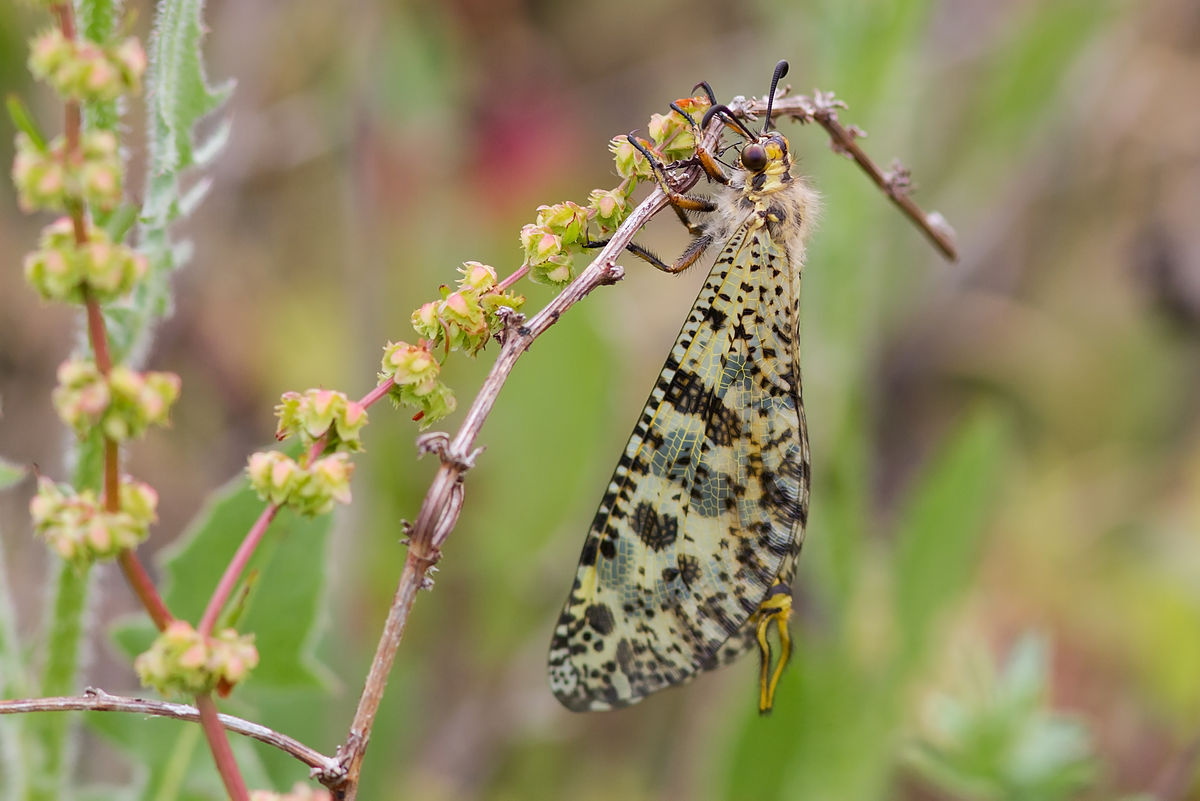
- 25 Nov 2024
In News:
Palparescontrarius is a species of antlion that was recently spotted for the first time in Tamil Nadu, on the Madras Christian College (MCC) campus. It is notable for being a large-sized adult antlion that resembles a dragonfly but has distinct characteristics that separate it from dragonflies, such as its clubbed antennae and fluttering flight.
Key Features of Palparescontrarius:
- Appearance:
- The adult Palparescontrarius is large and resembles a dragonfly in its general body structure.
- It has lacy wings, long clubbed antennae, and a slender, grayish body.
- Its wings are typically clear, although some species of antlions have spots on their wings.
- Flight and Behavior:
- Unlike dragonflies, Palparescontrarius has a distinct fluttering flight.
- It is a weak flier and can often be spotted at night near illuminated spots.
- Habitat and Lifestyle:
- Like other antlions, Palparescontrarius is found in dry, sandy regions and is mostly active at night.
- The larvae of this species are particularly known for their predatory behavior, as they trap ants and other small insects in cone-shaped pits they dig into the sand.
- Ecological Importance:
- Antlions, including Palparescontrarius, are harmless to humans and beneficial to the environment because they feed on ants and other insects, thus helping to control pest populations.
Okinawicius tekdi
- 07 Nov 2024
In News:
Researchers have recently discovered a new species of jumping spider in the Baner Hill area, underscoring the region's rich biodiversity and the growing need to preserve the natural landscapes around Pune.
About Okinawicius tekdi:
- The newly identified species, named Okinawicius tekdi, is a jumping spider that contributes to the growing diversity of India's spider population, now numbering 326 species of jumping spiders.
- The name "tekdi" comes from the Marathi word for "hill," reflecting the spider's habitat.
- The last time a spider species was identified in Pune was over three decades ago.
About Jumping Spiders:
- Jumping spiders belong to the family Salticidae and are known for their distinctive eight legs and remarkable jumping ability.
- These spiders possess a segmented body, a tough exoskeleton, and jointed legs.
- In addition to their agility, they are famous for spinning webs that they use to capture their prey.
ISRO’s First Electric Propulsion-Led Spacecraft (TDS-1)

- 28 Oct 2024
In News:
India's first home-grown electric propulsion satellite to be launched in Dec.
Key Highlights:
- Objective of TDS-1:
- Purpose: To demonstrate electric propulsion technology for satellite steering, using solar-powered ionized gas.
- Goal: Reduce reliance on chemical fuel, making satellites lighter and more efficient.
- Key Benefits of Electric Propulsion:
- Weight Reduction: The technology can significantly cut down satellite mass. For example, a satellite weighing 4 tonnes could be reduced to around 2 tonnes.
- Fuel Efficiency: By using electric propulsion, the need for chemical fuel is minimized, allowing for a more efficient journey to geostationary orbit.
- Technology Details:
- Fuel Used: Gases like Argon are ionized using solar power to create propulsion.
- Process: The ionized gas is expelled at high speeds to generate thrust, pushing the satellite towards its desired orbit.
- Historical Context:
- The technology was first used in GSAT-9 (South Asia Satellite) in 2017 but with imported Russian components.
- TDS-1 marks the first fully indigenous development of electric propulsion technology by ISRO, highlighting India’s increasing space autonomy.
- Significance for India’s Space Program:
- Self-Reliance: TDS-1 reflects ISRO’s growing capacity to develop advanced space technologies domestically.
- Future Prospects: This breakthrough is expected to lead to more efficient satellite designs, enhancing India’s competitiveness in the global space industry.
Emissions Gap Report 2024
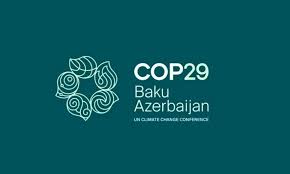
- 28 Oct 2024
In News:
The United Nations Environment Programme (UNEP) recently published the Emissions Gap Report 2024, in anticipation of the COP29 meeting of the UNFCCC to be held in Baku, Azerbaijan.
Key Highlights:
- Current Trajectory of Global Warming:
- If countries continue with current environmental policies, global temperatures are expected to rise by 3.1°C above pre-industrial levels.
- This is significantly higher than the Paris Agreement target of limiting global warming to well below 2°C, with an effort to cap it at 1.5°C.
- Paris Agreement at Risk:
- Even if all Nationally Determined Contributions (NDCs) are fully implemented (including both unconditional and conditional emissions reduction targets), the world would still experience 2.6°C of warming by 2030.
- This presents a major challenge to achieving the Paris Agreement’s climate goals.
- Urgent Need for Action:
- To limit global warming to 1.5°C, greenhouse gas emissions must peak before 2025 and decline by 43% by 2030.
- The report highlights the emission gap between current pledges and what is required to meet the 1.5°C goal.
- Record High Emissions:
- Global greenhouse gas emissions hit a record 57.1 gigatons of CO? equivalent in 2023.
- This represents an increase of 1.3% compared to 2022, continuing the upward trend from the previous decade.
- India’s Emissions:
- India’s greenhouse gas emissions grew by 6.1% between 2022 and 2023.
- Per capita emissions in India were 2.9 tCO?e in 2022, significantly lower than China (11 tCO?e) and the U.S. (18 tCO?e).
- G20 Countries’ Contribution:
- G20 countries, excluding the African Union, contributed 77% of global emissions in 2023.
- The six largest emitters (including China, U.S., and India) were responsible for 63% of global emissions.
- This shows a significant imbalance in emissions, with developed countries having much higher per capita emissions compared to developing nations like India and Africa.
- Necessary Emissions Cuts:
- To keep the 1.5°C target within reach, global emissions need to be cut by at least 7.5% annually until 2035.
- Cost of bridging the emissions gap: Achieving net-zero by 2050 will require USD 900 billion to USD 2.1 trillion annually, approximately 1% of global GDP.
- Emission Reduction Pathways:
- Renewable Energy: Scaling up solar and wind energy technologies could contribute up to 27% of the required emissions reductions by 2030.
- Forest Conservation: Protecting and restoring forests could provide 20% of the required emissions reductions by 2030.
- Other crucial measures include improving energy efficiency, transitioning to electric vehicles, and focusing on fuel switching in key sectors like transport, industry, and buildings.
- Disparities in Emissions:
- Despite changes over the past two decades, large disparities remain between emissions across regions.
- Developed countries have three times higher per capita emissions compared to the global average, while India, the African Union, and least developed countries continue to have much lower emissions.
- Call to Action:
- UNEP Executive Director Inger Andersen urged countries to act now, stating: “No more hot air, please.” The urgency is to ramp up climate pledges and ensure stronger actions in the upcoming COP29 talks in Baku, Azerbaijan (November 2024), where nations must work to get on a 1.5°C pathway.
United Nations Environment Programme (UNEP)
- Established: 1972, following the United Nations Conference on the Human Environment in Stockholm.
- Headquarters: Nairobi, Kenya.
- Governing Body: The United Nations Environment Assembly (UNEA), which is the world’s highest-level decision-making body on environmental matters, with 193 Member States.
- Programs & Initiatives: UNEP leads global efforts on climate action, ecosystem restoration, clean seas, and supports the Sustainable Development Goals (SDGs).
- Reports: UNEP publishes crucial assessments like the Emissions Gap Report, Global Environment Outlook, and Adaptation Gap Report, influencing global environmental policies.
United Nations Day 2024
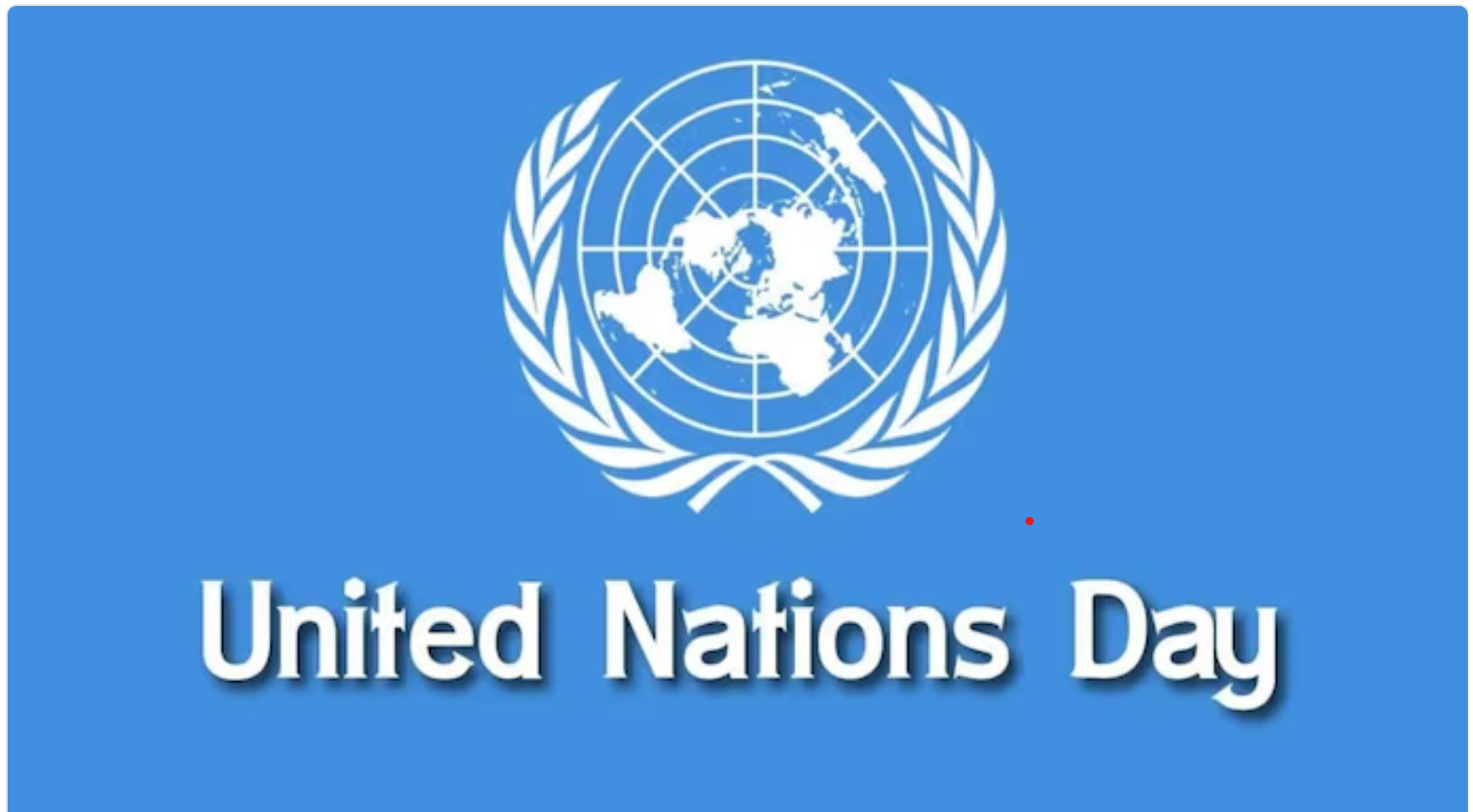
- 25 Oct 2024
In News:
United Nations Day is celebrated each year on October 24 to mark the anniversary of the UN Charter's entry into force, aiming to raise awareness about the goals and achievements of the international body.
Key Highlights:
- Purpose: Celebrates the anniversary of the UN Charter coming into effect on October 24, 1945, after World War II.
- Goal: Raise awareness about the UN’s objectives and accomplishments.
UN Charter Overview
- Signing & Implementation:
- Signed on June 26, 1945, in San Francisco.
- Came into effect on October 24, 1945.
- India ratified the UN Charter on October 30, 1945.
- Predecessor: The League of Nations, created in 1919 after WWI, aimed at promoting international cooperation and peace.
- Content:
- Foundational document of the UN, binding all member states.
- Establishes principles of international relations, including equality of nations and the prohibition of force between countries.
- Amended three times: 1963, 1965, and 1973.
UN's Core Objectives
- Peace and Security: Maintaining global peace and preventing conflicts.
- Humanitarian Aid: Providing assistance to those in need.
- Human Rights: Protecting and promoting human rights globally.
- International Law: Upholding the rule of law on the global stage.
Main Organs of the UN
- General Assembly (UNGA):
- Comprises all 193 Member States, each with one vote.
- Main policy-making body, addressing international issues covered by the UN Charter.
- Security Council (UNSC):
- Consists of 15 members (5 permanent, 10 elected for two-year terms).
- Permanent members: China, France, Russia, UK, USA.
- India has been elected to the UNSC eight times.
- Economic and Social Council (ECOSOC):
- Composed of 54 members elected by the General Assembly.
- Coordinates policy and addresses economic, social, and environmental issues.
- Trusteeship Council:
- Established to oversee trust territories transitioning to independence.
- International Court of Justice (ICJ):
- The only international court resolving disputes between UN member states.
- Handles contentious cases and provides advisory opinions.
- Secretariat:
- Led by the Secretary-General, appointed by the General Assembly based on Security Council recommendations.
- Acts as the chief administrative body of the UN.
Note: Most UN organs, including the UNGA, UNSC, ECOSOC, Trusteeship Council, and Secretariat, are based in New York, while the ICJ is located in The Hague, Netherlands.
Colombo Security Conclave (CSC)
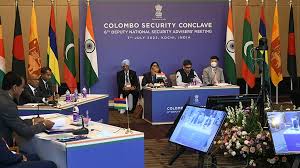
- 03 Sep 2024
In News:
The Colombo Security Conclave (CSC) recently marked a significant milestone with the signing of the Charter and the Memorandum of Understanding (MoU) for the establishment of its Secretariat in Colombo. This initiative aims to strengthen regional security collaboration among member states.
Key Features of the Colombo Security Conclave
- Member States: The CSC comprises five member countries:
- India
- Bangladesh
- Sri Lanka
- Maldives
- Mauritius
Additionally, Seychelles participates as an observer nation.
- Core Objectives: The primary goal of the CSC is to enhance regional security by addressing transnational threats and challenges that are common concerns for member states. This includes a collaborative approach to ensure stability and safety in the region.
Origin and Evolution
- The CSC originated as the Trilateral for Maritime Security Cooperation, established through trilateral meetings among National Security Advisors (NSAs) and Deputy NSAs from India, Maldives, and Sri Lanka starting in 2011.
- The initiative faced a setback after 2014 due to heightened tensions between India and the Maldives.
- It was revived and rebranded as the CSC in 2020, expanding its membership to include Mauritius and, more recently, Bangladesh.
Structure and Cooperation
- The conclave facilitates interactions among NSAs and Deputy NSAs of member countries, fostering dialogue and cooperation on security matters.
- Cooperation under the CSC is organized around five key pillars:
- Maritime Safety and Security
- Countering Terrorism and Radicalization
- Combating Trafficking and Transnational Organized Crime
- Cybersecurity and Protection of Critical Infrastructure
- Humanitarian Assistance and Disaster Relief
Permanent Secretariat
- The establishment of a permanent Secretariat in Colombo is expected to enhance coordination and streamline operations among member states, bolstering the efficacy of the CSC in addressing regional security issues.
WORLD RHINO DAY
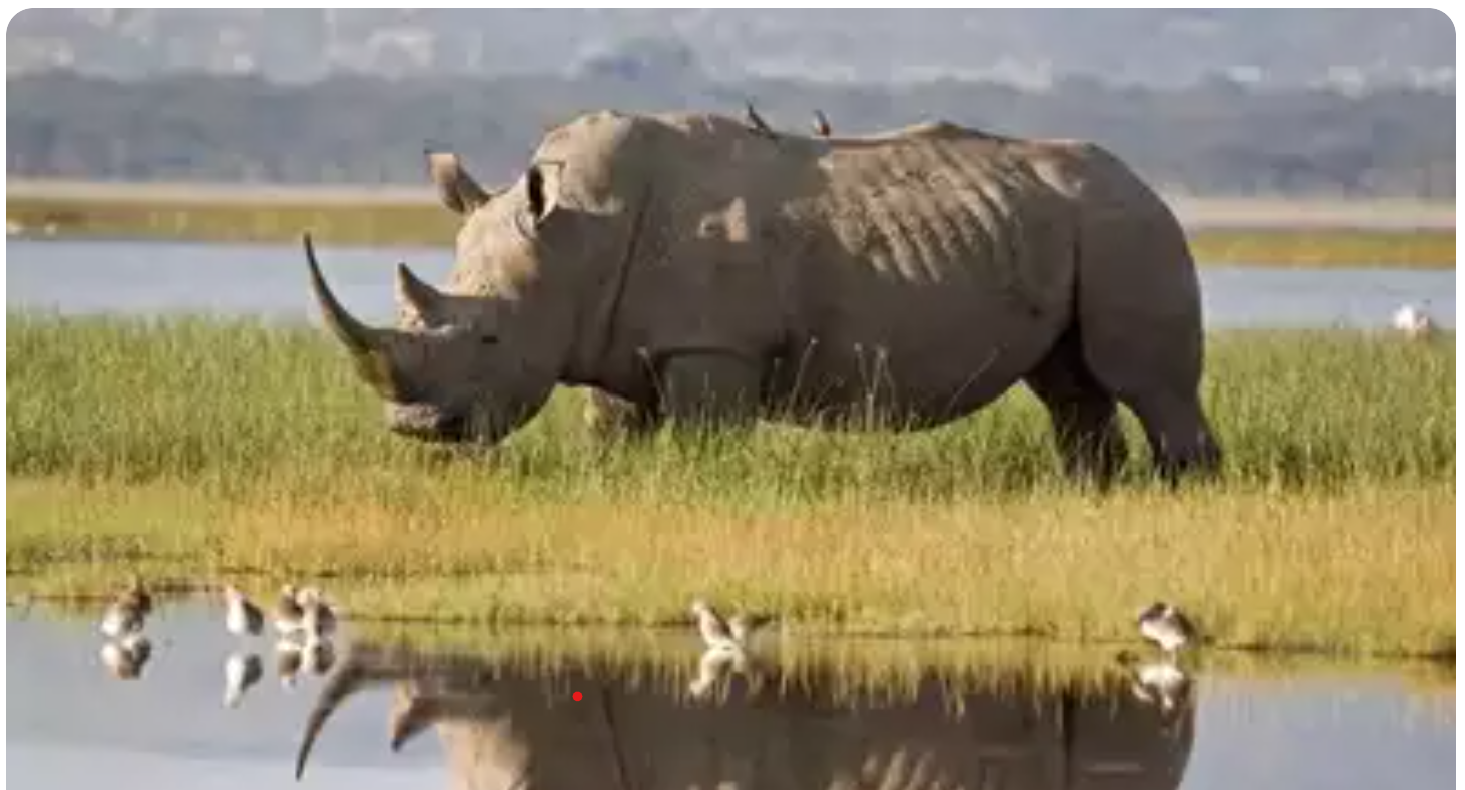
- 22 Sep 2024
In News:
Celebrated annually on September 22, World Rhino Day raises awareness about the critical conservation status of rhinoceroses and the myriad threats they face, such as poaching and habitat loss. This day, first initiated by the World Wildlife Fund South Africa in 2010, aims to highlight the need for the conservation of all five species of rhinos: the Javan, Sumatran, Black, Greater One-Horned, and White rhinos.
The Current Status of Rhino Species
- Among the five rhino species, three are classified as
- Critically Endangered: the Black, Javan, and Sumatran rhinos.
- The White Rhino is considered Near Threatened, with the Northern White Rhino itself critically endangered.
- The Greater One-Horned Rhino, primarily found in India, is listed as Vulnerable.
Notably, Kaziranga National Park in Assam is home to the largest population of Greater One-Horned Rhinos, boasting approximately 3,700 individuals.
Conservation Efforts
In India, initiatives like Project Rhino play a crucial role in safeguarding rhino populations. This project focuses on preventing poaching, enhancing habitat management, and increasing public awareness. It collaborates with various conservation groups and government agencies to strengthen law enforcement against poaching and to relocate rhinos to safer areas.
Another significant program is the Indian Rhino Vision 2020 (IRV 2020), aimed at boosting the population of Greater One-Horned Rhinos in Assam, particularly in regions where they had previously become extinct.
Surprising Facts About Rhinos
- Despite their thick skin, rhinos can get sunburned.
- Rhinos are related to zebras, horses, and tapirs.
- All five species are considered endangered.
- A group of rhinos is called a "crash."
- Rhinos' horns are made of keratin, the same protein found in human hair and nails.
- The term "rhinoceros" comes from two Greek words meaning "nose" and "horn."
- Rhinos and elephants are not natural enemies.
- One of the most famous depictions of a rhino is Albrecht Dürer's woodcut from 1515.
- The gestation period for rhinos can last up to 16 months.
- Rhinos have historically been used in traditional Asian medicine.
Cabinet approves Chandrayaan-4 mission, first module of Bharatiya Antariksh Station, Venus mission, next-gen launcher

- 19 Sep 2024
In News:
The PM Modi-led Union Cabinet has approved several ambitious space initiatives, marking a significant leap for India's lunar and space exploration programs.
Chandrayaan-4 Mission
- Objective: The fourth lunar mission aims to collect lunar samples, return them safely to Earth, and analyze them.
- Timeline: Expected completion within 36 months post-approval, with a budget of ?2,104 crore.
- Significance: This mission will build foundational technological capabilities for a manned Moon landing planned by 2040.
- Remarks: ISRO Chairman S. Somanath emphasized that the mission's highlight is its low-cost execution and the step-by-step approach to developing the necessary technology.
Bharatiya Antariksh Station (BAS) and Gaganyaan
- BAS Development: Approval for the first module of the Bharatiya Antariksh Station, targeted for launch by 2028, with full completion by 2035.
- Gaganyaan Program: The program’s budget has been revised to ?20,193 crore, with an additional funding of ?11,170 crore to enhance its scope and include precursor missions for BAS.
- Mission Plan: Eight missions are envisaged by 2028, including four under the ongoing Gaganyaan program, development of BAS-1, and four additional missions for technology demonstration and validation.
Venus Orbiter Mission (VOM)
- Launch Timeline: Scheduled for March 2028, VOM will explore Venus's atmosphere, geology, and generate extensive scientific data.
- Budget: The Cabinet approved ?1,236 crore for VOM, with ?824 crore allocated for the spacecraft.
- Research Focus: The mission will provide insights into Venus's transformation and how different planetary environments evolve.
Next-Generation Launch Vehicle (NGLV)
- Development Approval: A reusable NGLV has been greenlit with a budget of ?8,240 crore.
- Capabilities: The new rocket will have three times the payload lifting capability compared to existing vehicles (10 tonnes to 30 tonnes to Low Earth Orbit) and will be cost-effective and commercially viable.
- Features: The NGLV will include reusability options and modular green propulsion systems, enhancing India's capacity for satellite launches.
Gliese 12b

- 25 May 2024
Why is it in the News?
Recently, scientists have discovered a new planet that they say could "potentially support human life."
What is Gliese 12b?
- Gliese 12 b is a rocky planet just 40 light-years away from Earth.
- It orbits around a star called Gliese 12, a cool red dwarf in the constellation Pisces.
- This star is only 27 per cent of the size of our sun, with about 60 per cent of its surface temperature.
- But it's this lower temperature that makes Gliese 12 b theoretically habitable for humans.
- Gliese 12 b is one of the few known rocky planets where humans could theoretically survive according to scientists.
- The planet was discovered by an international team, in collaboration with NASA and the European Space Agency, using data from NASA's Transiting Exoplanet Survey Satellite (TESS) and ESA's Characterizing Exoplanet Satellite (CHEOPS).
- Gliese 12 b falls into this "Goldilocks zone," with an average temperature of 107 degrees Fahrenheit and a size somewhere between Venus and Earth.
- The researchers hope that by learning more about Gliese 12 b's atmosphere we may be able to answer questions about the evolution of our own solar system and other habitable planets.
About the Transiting Exoplanet Survey Satellite (TESS):
- TESS is a NASA mission dedicated to discovering exoplanets around nearby bright stars.
- It was launched on April 18, 2018, aboard a SpaceX Falcon 9 rocket from Cape Canaveral.
- TESS operates in a unique high Earth orbit with a period of 12 to 15 days.
- This orbit is designed to keep the telescope's view largely unobstructed by Earth and the Moon.
- The prime mission concluded on July 4, 2020, but TESS continues to operate on an extended mission.
- TESS has identified a wide range of exoplanets, from small rocky worlds to giant planets, highlighting the diversity of planetary systems in our galaxy.
- TESS uses the transit method to find exoplanets. It monitors stars for periodic dips in brightness, which occur when a planet crosses in front of the star along our line of sight.
- The size of the dip indicates the planet's diameter and the duration of the transit provides information about the planet's orbit.
- The transit method allows scientists to determine the diameter and orbital size of exoplanets.
- Orbits within certain ranges fall into the "habitable zone," where conditions may allow liquid water to exist on the surface of Earth-like worlds.
The League of Arab States (LAS)/Arab League
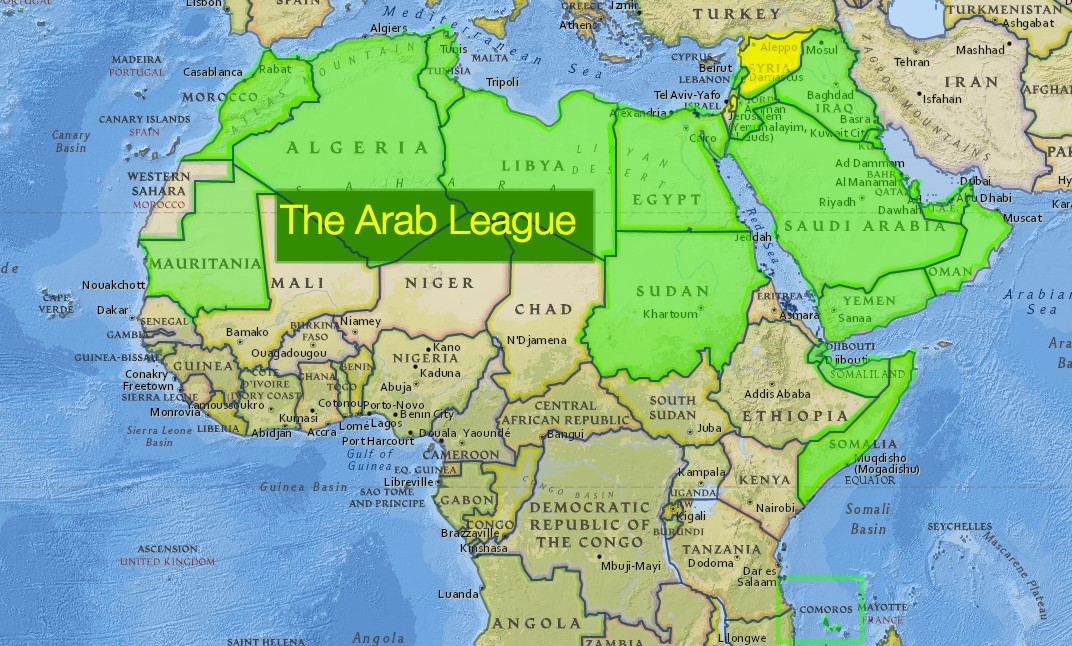
- 24 May 2024
Why is it in the News?
The Arab League called recently for a UN peacekeeping force in the "occupied Palestinian territories" at an international summit dominated by the war between Israel and Hamas.
What is the Arab League?
- The League of Arab States was formed in Cairo on 22 March 1945 with six members: Egypt, Iraq, Transjordan (later renamed Jordan), Lebanon, Saudi Arabia and Syria, with Yemen joining on 5 May 1945.
- It currently has 22 member states; Algeria, Bahrain, Comoros, Djibouti, Egypt, Iraq, Jordon, Kuwait, Lebanon, Libya, Mauritania, Morocco, Oman, Palestinian Authority, Qatar, Saudi Arabia, Somalia, Sudan, Syria, Tunisia, United Arab Emirates and Yemen.
- Four countries have been admitted as observers: Brazil, Eritrea, India and Venezuela.
- Each member state has one vote in the League Council, while decisions are binding only on those states that have voted for them.
- The official language of the Arab League and its 22 member states is Arabic.
- The league seeks to promote the political, social, and military interests of its members.
- The head of the league is known as the secretary-general.
- The secretary-general is appointed to a five-year term by a two-thirds majority of league members.
- Headquarters: Cairo, Egypt.
Goals:
- The overall aim of the league is to promote Arab interests.
- Its main goals are to strengthen and coordinate the political, cultural, economic, and social programs of its members and to try to settle disputes among them or between them and third parties.
- In 1950 the members also agreed to provide military support to help defend each other.
The Arab League Council:
- The League Council is the highest body of the Arab League and is composed of representatives of member states, typically foreign ministers, their representatives, or permanent delegates.
- Each member state has one vote.
- The Council meets twice a year, in March and September. Two or more members may request a special session if they desire.
- The general secretariat manages the daily operations of the league and is headed by the secretary-general.
- The general secretariat is the administrative body of the league, the executive body of the council, and the specialized ministerial councils.
Synchrotron
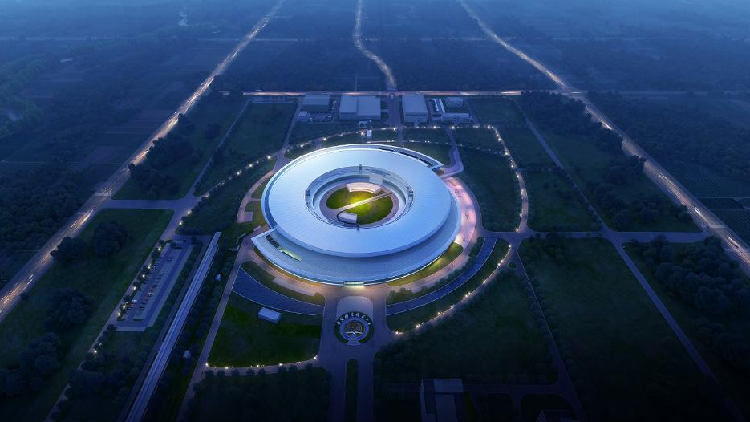
- 17 May 2024
Why is it in the News?
China's latest scientific achievement, the High Energy Photon Source (HEPS), is poised to become Asia's first fourth-generation synchrotron light source which is scheduled to commence operations by the end of this year.
What is a Synchrotron?
- A synchrotron is a type of circular particle accelerator where particles travel in a loop.
- It functions by accelerating charged particles, typically electrons, through sequences of magnets until they approach the speed of light.
How Does It Work?
- Acceleration: Charged particles are accelerated through magnets.
- Production of Light: These high-speed electrons generate extremely bright light, known as synchrotron light.
- This light, predominantly in the X-ray region, is millions of times brighter than conventional sources and 10 billion times brighter than the sun.
- Beamlines and Workstations: The intense light is directed down beamlines to experimental workstations for research purposes.
Applications:
- Research: Scientists use synchrotron light to study tiny matter such as atoms and molecules.
- By examining how a sample scatters, diffracts, absorbs, or reemits the synchrotron light, they can uncover details about its structure and chemical composition.
Global Presence:
- There are approximately 70 synchrotrons worldwide in various stages of development.
- They have varying technical specifications and uses, ranging from practical applications to fundamental theoretical research.
In India:
- India has a synchrotron facility known as the "Indus Synchrotron."
- It is located at the Raja Ramanna Centre for Advanced Technology (RRCAT) in Indore, Madhya Pradesh.
- The Indus Synchrotron is a third-generation synchrotron radiation source that is used for various research applications in fields such as materials science, biology, and environmental science.
What is the High Energy Photon Source (HEPS)?
- HEPS (High Energy Photon Source) is recognized as the brightest synchrotron X-ray source in Asia.
- Location: The HEPS facility is situated in Huairou, China, approximately 50 kilometres from Beijing.
- Acceleration Capabilities: HEPS is designed to accelerate electrons up to energies of 6 gigaelectron volts within its 36-kilometer circumference storage ring, producing high-energy X-rays for research purposes.
- Nanoscale Investigations: The high-energy X-rays generated by HEPS can penetrate deep into samples, allowing researchers to study intricate details at the nanometer scale.
- Diverse Research Applications: HEPS will cater to various research fields, including energy, condensed matter physics, materials innovation, and biomedicine, by providing access to 14 specialized beamlines.
- Superiority to Existing Synchrotrons: Compared to China's current most advanced synchrotron, the Shanghai Synchrotron Radiation Facility (with a circumference of 432 meters), HEPS will offer a time resolution 10,000 times better.
PM Modi lays stone for India’s second spaceport at Kulasekarapattinam
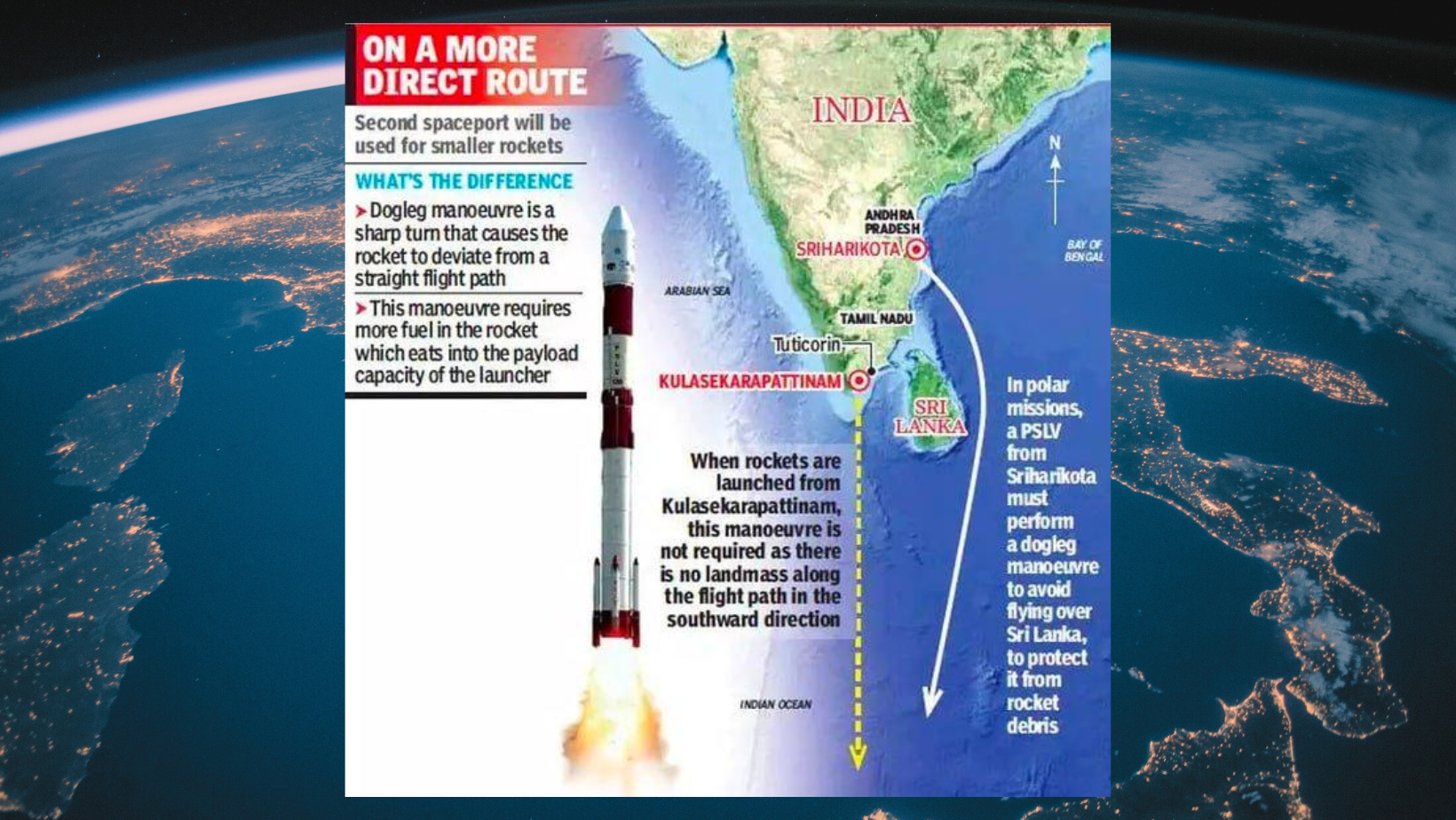
- 29 Feb 2024
Why is it in the News?
Prime Minister Narendra Modi laid the foundation stone for the country’s second spaceport at Kulasekarapattinam in Tuticorin district recently.
About Kulasekarapattinam Spaceport:
- The Kulasekarapattinam Spaceport is a forthcoming space launch facility located in Kulasekarapattinam, a coastal village near the temple town of Tiruchendur in Thoothukudi district, southern Tamil Nadu.
- It will become the second operational spaceport in India after the Satish Dhawan Space Centre, established in Sriharikota, Andhra Pradesh, in 1971, and will feature two launch pads.
- The primary focus of the Kulasekarapattinam Spaceport will be to facilitate the commercial launch of Small Satellite Launch Vehicles (SSLVs).
- Spanning 2,350 acres, the spaceport will comprise 35 essential facilities, including a launch pad, rocket integration facilities, ground range and checkout facilities, and a mobile launch structure (MLS) equipped with checkout computers.
- With the capability to launch up to 24 satellites annually using a mobile launch structure, it offers a strategic advantage by enabling direct southward launches over the Indian Ocean, thus conserving fuel for small rocket launches.
- This stands in contrast to the Satish Dhawan Space Centre, where launching into a polar orbit necessitates additional fuel due to the curved trajectory required to avoid crossing landmasses, particularly Sri Lanka.
- The estimated cost of the Kulasekarapattinam Spaceport project is Rs. 986 crore.
About the Small Satellite Launch Vehicles (SSLVs):
- The SSLV, or Small Satellite Launch Vehicle, is a three-stage launch vehicle characterized by three solid propulsion stages and a liquid propulsion-based Velocity Trimming Module (VTM) serving as a terminal stage.
- Measuring 2 meters in diameter and 34 meters in length, the SSLV boasts a lift-off weight of 120 tonnes.
- Designed for versatility, the SSLV can effectively launch a 500kg satellite into a 500 km planar orbit.
- Notable features of the SSLV include its cost-effectiveness, rapid turnaround time, ability to accommodate multiple satellites, feasibility for launch-on-demand, and minimal infrastructure requirements.
India gets desi Garbhini GA2 for evaluation of foetal growth

- 27 Feb 2024
Why is it in the News?
Specifically tailored to address the unique characteristics of foetal growth within the Indian population, India has finally got its locally made ‘Garbhini-GA2’, a groundbreaking Artificial Intelligence model.
What is Garbhini-GA2?
- The Garbhini-GA2 model, developed as part of the DBT India initiative (GARBH-Ini) program by researchers at the Indian Institute of Technology (IIT) Madras and the Translational Health Science and Technology Institute (THSTI), Faridabad, addresses the challenge of accurately estimating foetal age (gestational age, GA) in the Indian population, particularly in the second and third trimesters.
- Unlike existing formulas designed for Western populations, Garbhini-GA2 accounts for variations in foetal growth specific to the Indian context, significantly reducing estimation errors by nearly threefold.
- This innovative model is crucial for ensuring precise prenatal care and determining accurate delivery dates, thereby enhancing maternal and foetal health outcomes.
- Garbhini-GA2 marks a milestone as the first late-trimester GA estimation model validated using Indian population data, offering a tailored approach to foetal age determination that is essential for effective maternal healthcare."
About Translational Health Science and Technology Institute (THSTI):
- THSTI, an autonomous institute under the Ministry of Science and Technology, was founded in 2009 in Faridabad, Haryana, with a core commitment to advancing research beyond mere discovery.
- By fostering collaboration among diverse teams in medicine, science, and technology, THSTI leverages translational expertise to drive clinical research and innovation.
- In addition to its core mission, THSTI plays a pivotal role in fostering social innovation and entrepreneurial endeavors, particularly in the domain of maternal and child healthcare.
G-33 calls for progress on agricultural trade ahead of WTO Ministerial Conference
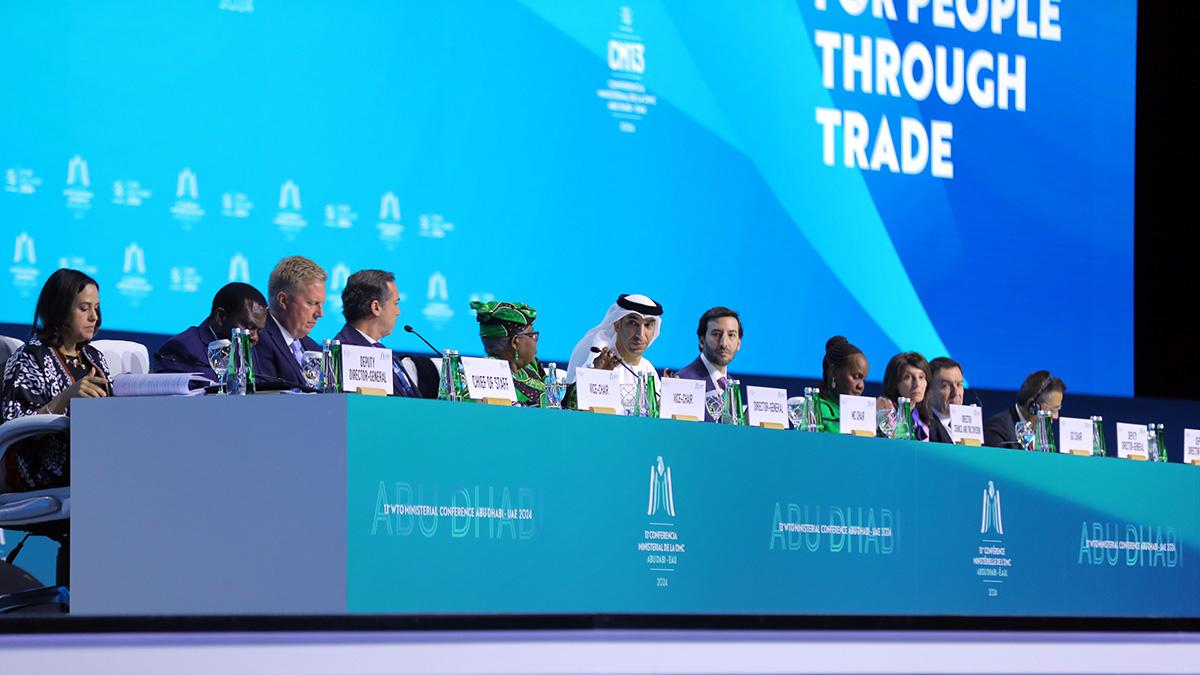
- 26 Feb 2024
Why is it in the News?
The G-33 group of countries recently expressed serious concern over the lack of progress in agriculture trade negotiations and urged the members of the World Trade Organisation (WTO) to work on a permanent solution to the issue of public stockholding of grains for food security purposes.
Key Highlights of the G33 Trade Ministers Meeting in Abu Dhabi:
- Special Safeguard Mechanism: The G33 group emphasized the importance of the Special Safeguard Mechanism (SSM) as a crucial instrument against significant import surges or sudden price declines.
- They called for WTO members to reach an agreement and adopt a decision on SSM by the 14th WTO Ministerial Conference (MC).
- Permanent Solution for Public Stockholding: The G33 nations sought a permanent solution during the 13th Ministerial Conference, which commenced in Abu Dhabi recently.
- The MC serves as the highest decision-making body of the WTO.
- Critical Importance of Public Stockholding: The G33 statement highlighted the critical significance of public stockholding for food security in developing countries.
- It enables governments to procure crops from farmers at the minimum support price (MSP) and store and distribute food grains to the poor.
- This program supports low-income or resource-poor producers and contributes to rural development.
- The 13th WTO Ministerial Conference provides a crucial platform for WTO members to engage in constructive discussions and work towards finding mutually beneficial solutions.
What is G 33?
- The G33 is a forum of developing countries including India, Brazil, South Africa etc. formed during the Cancun ministerial conference of the WTO (2003), to protect the interest of the developing countries in agricultural trade negotiations.
- It was created to help group countries which were all facing similar problems.
- The G33 has proposed special rules for developing countries at WTO negotiations, like allowing them to continue to restrict access to their agricultural markets.
- Dominated by India, the group has "defensive" concerns regarding agriculture in relation to World Trade Organization negotiations, and seeks to limit the degree of market opening required of developing countries.
- The group has advocated the creation of a "special products" exemption, which would allow developing countries to exempt certain products from tariff exemptions, and also a "special safeguard mechanism" which would permit tariff increases in response to import surges.
Will the ‘Paruveta Festival’ celebrated in Andhra’s Ahobilam get UNESCO recognition?

- 22 Feb 2024
Why is it in the News?
INTACH is striving to obtain UNESCO recognition for the yearly 'Paruveta' festival, emphasising its cultural significance.
About the Paruveta Festival:
- Paruveta Festival, also known as the 'mock hunting festival', is a celebrated tradition at the Sri Narasimha Swamy temple in Ahobilam, Andhra Pradesh.
- It stands out as a symbol of communal harmony, where devotees from various religious backgrounds, including Muslims, come together to offer prayers.
Origin and Significance:
- According to folklore, the festival commemorates Lord Vishnu's incarnation as Narasimha, who married Chenchulakshmi, a tribal girl, symbolising unity across different communities.
- The festival's rituals, typically observed during Vijayadashami or Sankranti, extend for a 'mandala' period of forty days in Ahobilam.
Activities and Customs:
- During the festival, the temple deity is carried to the 32 Chenchu tribal villages surrounding Ahobilam for forty days.
- The journey begins with a symbolic act where tribals shoot arrows at the deity's palanquin, signifying protection and reverence.
- Chenchus participated by undertaking 'Narasimha Deeksha', wearing yellow robes and Tulasi Mala, while observing celibacy.
- The temple staff reside in these villages throughout the festival, showcasing the tradition of a casteless society with no traces of untouchability.
Key Points about Chenchu Tribes:
- Geographic Distribution: Chenchu tribes primarily inhabit the hills of southern India, particularly in Andhra Pradesh.
- Additionally, Chenchu communities can be found in Tamil Nadu, Karnataka, and Orissa.
- Language and Communication: Their native language, known as Chenchu, belongs to the Dravidian language family.
- While many Chenchu individuals speak Telugu, their traditional language holds cultural significance.
- Livelihood and Occupation: Historically, Chenchu people pursued a nomadic lifestyle, relying on food gathering.
- However, due to factors such as agricultural expansion, many have transitioned to working as farmers or forest labourers.
- Housing and Settlements: Chenchu dwellings are typically hive-shaped structures constructed from wattle thatch, composed of interwoven poles, twigs, reeds, or branches.
- These houses reflect their traditional architectural style and are adapted to their environment.
- Social Structure: Chenchu society is organised into clans, which are extended family units, as well as local groups and individual families.
- They adhere to exogamous marriage practices, prohibiting unions within the same clan.
- Additionally, Chenchu kinship is patrilineal, tracing descent through male lineage.
India, and ASEAN discuss the review of the trade agreement
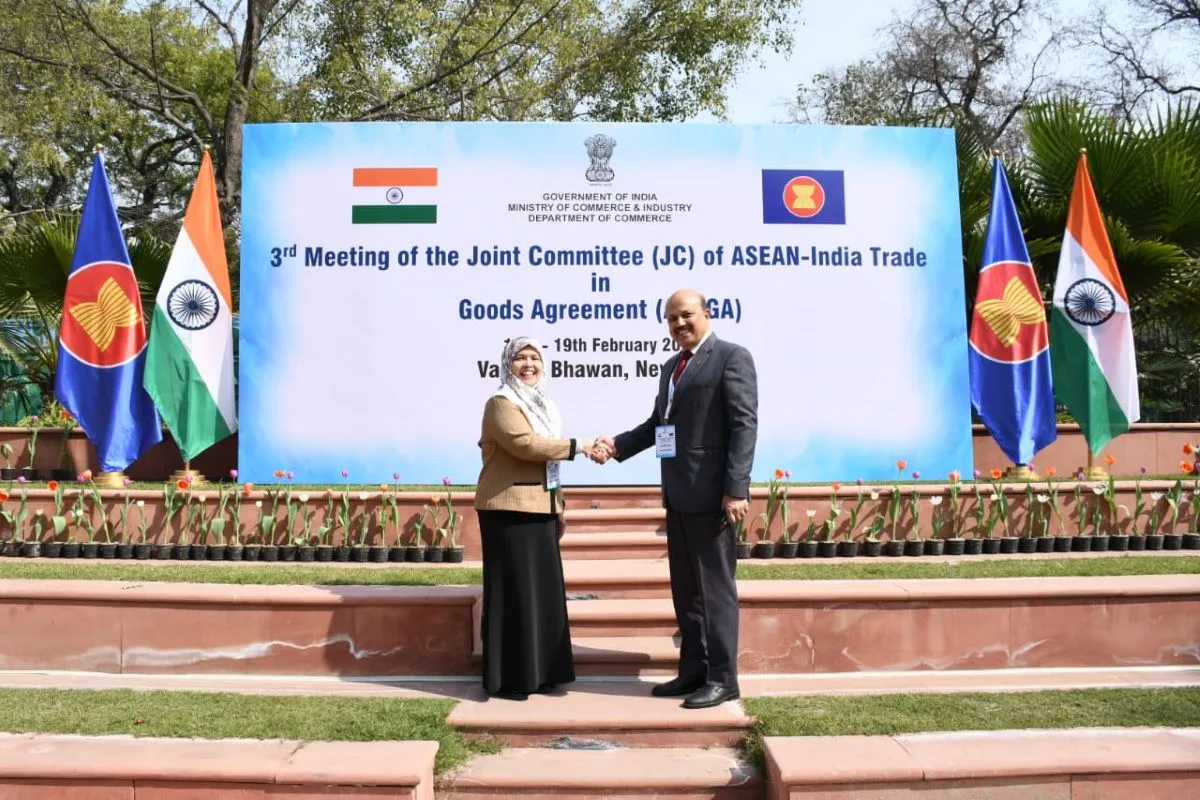
- 20 Feb 2024
Why is it in the News?
India hosted the 3rd meeting of the AITIGA Joint Committee, which focused on reviewing the ASEAN-India Trade in Goods Agreement at Vanijya Bhawan in New Delhi from February 16th to 19th, 2024.
About the ASEAN-India Trade in Goods Agreement (AITIGA):
- The ASEAN-India Trade in Goods Agreement (AITIGA) is a trade deal between the ten member states of ASEAN and India.
- ASEAN and India signed the Agreement at the 7th ASEAN Economic Ministers-India Consultations in Bangkok, Thailand in 2009.
- The Agreement, which came into effect in 2010, is sometimes referred to as the ASEAN-India Free Trade Agreement.
- The Agreement originated out of the Framework Agreement on Comprehensive Economic Cooperation between India and ASEAN created in 2003.
- The Framework Agreement laid a sound basis for the establishment of an ASEAN-India Free Trade Area (FTA), which includes FTA in goods, services and investment.
- The Agreement has led to steadily increasing trade between ASEAN and India since its signing.
- In 2019-20, trade between India and ASEAN was worth US$86 billion.
About ASEAN:
- The Association of Southeast Asian Nations, or ASEAN is an intergovernmental organization of ten Southeast Asian countries:
- Brunei, Cambodia, Indonesia, Laos, Malaysia, Myanmar, the Philippines, Singapore, Thailand, and Vietnam.
- ASEAN's primary objectives are to promote political and economic cooperation and regional stability among its member states.
- The organization operates on the principles of mutual respect, non-interference in internal affairs, and consensus-building. ASEAN's motto, "One Vision, One Identity, One Community," underscores its commitment to fostering unity and solidarity among Southeast Asian nations.
- Economically, ASEAN has made significant strides towards integration through initiatives like the ASEAN Economic Community (AEC), aimed at creating a single market and production base.
- This has facilitated trade, investment, and economic development within the region.
- Additionally, ASEAN serves as a platform for dialogue and cooperation on a wide range of issues, including security, environmental sustainability, cultural exchange, and disaster management.
India initiates Anti-Dumping Probe into Solar Glass Imports from China and Vietnam (TOI)

- 17 Feb 2024
Why is it in the News?
India has launched an anti-dumping investigation into the import of solar glass from China and Vietnam following a complaint from domestic players.
What is Anti-Dumping Duty?
- Anti-dumping duty is a tariff levied on imports from foreign countries when their prices are lower than the fair market value of similar goods in the domestic market.
- It's implemented by governments to counteract the practice of "dumping," where foreign goods are sold at unfairly low prices in the domestic market, posing a threat to local businesses.
- The primary objective of anti-dumping duty is to safeguard domestic industries from unfair competition and restore fair trade practices.
- This measure is permitted by the World Trade Organization (WTO) to address instances where dumping causes genuine harm to domestic industries.
- To impose anti-dumping duties, governments must provide evidence of dumping, quantify its extent in terms of costs, and demonstrate the resulting injury or threat to domestic markets.
- While aimed at protecting local industries, anti-dumping duties can sometimes lead to increased prices for consumers within the country.
About Countervailing Duty (CVD):
- Countervailing duty (CVD) is a type of tariff imposed by a government to offset the adverse effects of import subsidies on domestic producers.
- It serves as an import tax applied by the importing country on subsidised products from abroad.
- CVD is imposed to address situations where foreign governments provide subsidies to their producers, lowering the cost of their goods and potentially disrupting fair competition.
- To prevent the influx of subsidised products into their markets, importing countries levy CVD, effectively neutralising the price advantage enjoyed by these imports.
- The imposition of CVD is permitted by the World Trade Organization (WTO) to help maintain fair trade practices among its member countries.
Difference Between Anti-dumping Duty and Countervailing Duty:
- Anti-dumping duty is enacted to safeguard domestic markets from the harmful effects of low-priced foreign goods, while CVD targets products benefiting from government subsidies, resulting in artificially low prices.
- The amount of Anti-dumping duty is determined by the margin of dumping, whereas CVD is calculated based on the subsidy value granted to foreign goods.
DoT Unveils 'Sangam: Digital Twin' Initiative (TOI)

- 16 Feb 2024
Why is it in the News?
The Department of Telecommunications has introduced the 'Sangam: Digital Twin' initiative, which aims to transform infrastructure planning and design through innovation and the integration of advanced technologies.
What is Sangam: Digital Twin initiative?
- Digital Twin technology creates virtual replicas of physical assets, enabling monitoring, simulation, and analysis for adaptive outcomes.
- 'Sangam: Digital Twin' consists of two stages:
- The first is exploratory for creative exploration, and
- The second is for the practical demonstration of specific use cases, creating a future blueprint for collaboration in future infrastructure projects.
- The initiative aligns with advancements in communication, computation and sensing over the past decade, fostering a collaborative approach to reshape infrastructure planning and design.
- 'Sangam: Digital Twin' integrates 5G, IoT, AI, AR/VR, AI native 6G, Digital Twin and next-gen computational technologies to break silos and promote a whole-of-nation approach.
- The new initiative aims to transform ideas into solutions, bridging the gap between conceptualisation and realisation, and fostering advancements in infrastructure.
- Sangam encourages a holistic approach to innovation, uniting stakeholders to harness unified data and collective intelligence.
- It is aimed at creating an ecosystem that maximises the value of technological advancements for development.
- Sangam aims to demonstrate the practical implementation of innovative infrastructure planning solutions, providing a model framework for collaboration and a future blueprint for scaling successful strategies in future projects.
- The platform also offers a blog for pre-registered participants to connect, share insights, and engage in discussions.
Significance of Digital Twins:
- Facilitates remote monitoring, making it applicable for use in hazardous operations.
- Enhances predictive capabilities, assisting in making informed policy decisions.
- Improves operational efficiency, thereby ensuring the maintenance of output quality.
- Assists in urban planning by generating various simulations and forecasts.
Alaskapox Claims One Life in US (TOI)
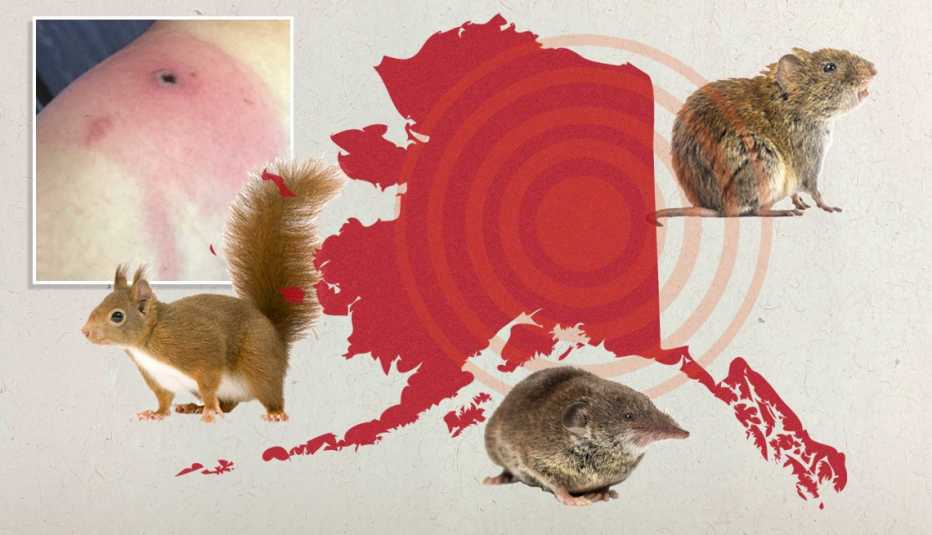
- 15 Feb 2024
Why is it in the News?
An elderly man has died from Alaskapox, the first known fatality from the recently discovered virus.
What is Alaskapox?
- Alaskapox is caused by orthopoxvirus, a family of brick-shaped viruses that can infect both animals and humans, leading to skin lesions or pox.
- The virus was first identified in a woman living near Fairbanks, Alaska, and has since been primarily detected in small mammals like red-backed voles and shrews.
- However, domestic pets such as dogs and cats may also be carriers of the virus.
What are the symptoms of Alaskapox?
- Symptoms of Alaskapox include the development of one or more bumps or pustules on the skin, accompanied by joint or muscle pain and swollen lymph nodes.
- While the majority of the seven known human cases in Alaska over the past nine years have experienced mild illnesses that were resolved without intervention, the virus poses a greater threat to individuals with weakened immune systems.
How is Alaskapox Transmitted?
- Transmission of Alaskapox is believed to occur through direct contact with infected animals.
- Unlike some of its orthopoxvirus relatives, there have been no documented instances of Alaskapox spreading from person to person.
- Though it's not clear how Alaskapox is transmitted, researchers say that it may be zoonotic meaning it can jump from animals to humans.
Odisha’s Gupteswar Forest Is Now A Biodiversity Heritage Site (TOI)
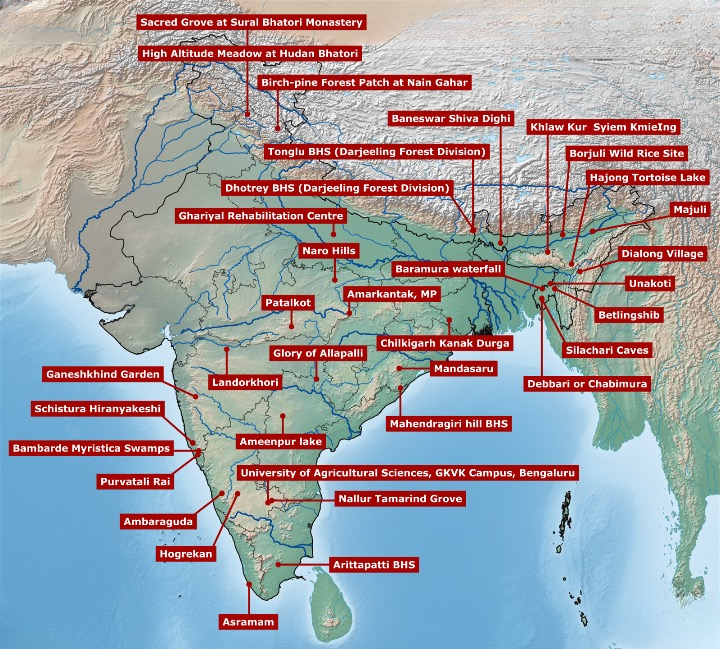
- 13 Feb 2024
Why is it in the News?
Gupteswar forest in the Koraput district of Odisha has been officially declared the fourth biodiversity heritage site (BHS) in the state.
What is a Biodiversity Heritage Site (BHS)?
- A Biodiversity Heritage Site (BHS) is a unique ecosystem with rich biodiversity that is designated for special protection and conservation.
- These sites are typically declared by individual states or local bodies under the provisions of the Biological Diversity Act, of 2002, in India.
Who can Declare BHS?
- Under Section 37 of the Biological Diversity Act, 2002 the State Government in consultation with local bodies may notify areas of biodiversity importance as Biodiversity Heritage Sites (BHS).
- The ‘Biodiversity Heritage Sites’ (BHS) are unique ecosystems having rich biodiversity comprising of any one or more of the following components:
- The richness of wild as well as domesticated species or intra-specific categories.
- High endemism.
- Presence of rare and threatened species, keystone species, and species of evolutionary significance.
- Wild ancestors of domestic/cultivated species or their varieties.
- Past pre-eminence of biological components represented by fossil beds and having significant cultural, ethical or aesthetic values are important for the maintenance of cultural diversity, with or without a long history of human association with them.
- “The creation of BHS may not put any restriction on the prevailing practices and usages of the local communities, other than those voluntarily decided by them.
- The purpose of declaring BHS is to enhance the quality of life of the local communities through conservation of such sites.”
The main objectives of declaring an area as a BHS are:
- To conserve biological diversity, including genetic diversity, ecosystem diversity, and species diversity.
- To protect habitats of rare, endemic, and threatened species.
- To promote sustainable use of biodiversity.
- To maintain cultural diversity and traditional knowledge associated with biodiversity.
- To raise awareness about the importance of biodiversity conservation.
Biodiversity Heritage Sites (BHS) of India:
NAL Successfully Tested High Altitude Pseudo-Satellite (HAPS) at Challakere, Karnataka (TOI)

- 12 Feb 2024
Why is it in the News?
Scientists from city-based National Aerospace Laboratories (NAL), a Council of Scientific and Industrial Research (CSIR) lab, achieved a breakthrough by successfully testing an unmanned aerial vehicle called High-Altitude Pseudo Satellite (HAPS) at Chitradurga's Challakere in Karnataka.
News Summary:
- National Aerospace Laboratories (NAL) has achieved a milestone with the successful testing of an unmanned aerial vehicle known as the High Altitude Pseudo-Satellite (HAPS) in Challakere, Karnataka.
- This innovative system, measuring 5 meters in length with an impressive 11-meter wingspan and weighing 23 kg, soared to an altitude of approximately 3 km and maintained its position for an impressive duration of eight hours.
- A comprehensive series of tests is slated, with the ultimate goal of developing a full-fledged aircraft boasting a remarkable 30-meter wingspan comparable to a Boeing 737 by the year 2027.
- This advanced craft is anticipated to ascend to an impressive altitude of 23 km and remain airborne for a remarkable period of at least 90 days.
- NAL's ambitious agenda includes the design and construction of various components essential for the HAPS, including propellers, battery management systems, carbon-composite airframes, flight-control systems, and high-powered electric motors capable of withstanding extreme temperature variations.
- Additionally, in a separate endeavour, a Bengaluru-based private company recently conducted the inaugural test flight of a solar-powered, long-endurance drone, achieving an impressive flight duration of 21 hours.
About High Altitude Pseudo-Satellite (HAPS):
- Since the 1990s, numerous global initiatives have been undertaken to explore the potential applications of High Altitude Pseudo Satellites, also known as High Altitude Platform Stations (HAPS).
- Positioned above 20 km altitude in the stratosphere, these unmanned aircraft are designed for exceptionally long-duration flights, spanning months or even years.
- HAPS encompass various aircraft types, including airplanes, airships, and balloons.
Benefits/Advantages of HAPS:
- These solar-powered vehicles bridge the gap between unmanned aerial vehicles (UAVs) operating in lower altitudes and traditional satellites in space.
- They offer a wide array of applications, including telecommunications, emergency/public safety communications, intelligent transportation systems, maritime surveillance, environmental monitoring, and land border control.
- Compared to ground-based communication networks, HAPS can cover larger areas with minimal interference and facilitate data transfer between satellites and ground-based telecom networks.
- Unlike traditional satellites, which are costly to construct and launch, HAPS are more cost-effective and easier to deploy.
- It has both military and civilian applications, including intelligence, surveillance, telecommunication, and disaster response.
- The technology offers lower latency and can connect to multiple ground stations.
Significance for India:
- In India, Hindustan Aeronautics Limited (HAL) announced in 2022 its collaboration with a startup company to develop a "futuristic" high-altitude pseudo satellite.
- Given India's extensive land borders stretching approximately 15,000 km and a coastline spanning 7,500 km, securing these borders is paramount, necessitating diverse solutions.
- Hovering at the Earth's atmospheric edge, HAPS offer valuable services for efficient border surveillance, tracking enemy movements deep into territories or seas, and conducting round-the-clock missions.
- Equipped with advanced optical and infrared cameras, state-of-the-art sensors, and other sophisticated technology, these aerial platforms are ideal for border patrolling, target tracking, maritime surveillance, navigation, and even missile detection.
- China's Aviation Industry Corporation of China (AVIC), a state-owned aerospace and defense conglomerate, has been actively developing various HAPS platforms for surveillance purposes.
- In 2018, it successfully tested the solar-powered Morning Star drone, renowned for its prolonged airborne endurance.
Israel discovers 6-million-year-old giant underwater canyon of Messinian Event (TOI)
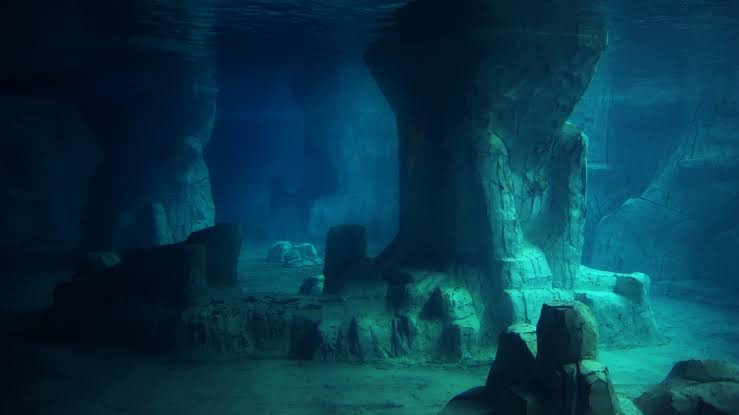
- 06 Feb 2024
Why is it in the News?
The Israel Geological Survey announced recently that Israeli geologists discovered a huge underwater canyon on the bottom of the Eastern Mediterranean that was formed about 6 million years ago.
What is Messinian Event?
- The Messinian Event, also referred to as the Messinian Salinity Crisis (MSC).
- It marks a significant geological occurrence during which the Mediterranean Sea experienced a cycle of partial or near-complete desiccation, making it one of the most severe ecological crises in Earth's history.
- This event unfolded approximately 6 million years ago (MYA) and persisted until around 5.3 MYA.
- The process began with the severance of the connection between the Atlantic Ocean and the Mediterranean Sea.
- This disconnection resulted from a combination of reduced sea levels globally and the collision of the European and African plates, causing the land to rise.
- Consequently, the Mediterranean experienced significant evaporation, as its evaporation rate exceeded its precipitation rate.
- Without a substantial influx of water from the Atlantic, the sea began to evaporate rapidly.
- During this period, a vast underground canyon formed, with rivers cutting deep into the basin floor, creating a canyon much larger than the Grand Canyon, reaching depths of up to 2,000 meters (6562 feet).
- As the Mediterranean water evaporated, salt deposits, primarily composed of Halite and Gypsum, accumulated on the basin floor, some reaching depths of 800 meters (2,500 feet).
- Despite the rapid evaporation, salt deposition did not keep pace, resulting in an increase in water salinity.
- The heightened salinity levels made the Mediterranean inhospitable to marine life, leading to a decline in biodiversity.
- Eventually, the sea dried up almost entirely, culminating in the Zanclean flood when the Atlantic Ocean reclaimed the basin.
What is Deep-sea Canyon?
- Deep-sea canyons, such as those formed during the Messinian Event, are steep valleys carved into the seafloor of the continental slope, extending onto the continental shelf.
- These canyons vary in size and shape and have been sculpted by various erosional processes, including river flows during periods of low sea levels, mudslides, debris flows, and turbidity currents.
INS Sandhayak - the Indian Navy’s First Survey Vessel Large (SVL) Ship (TOI)
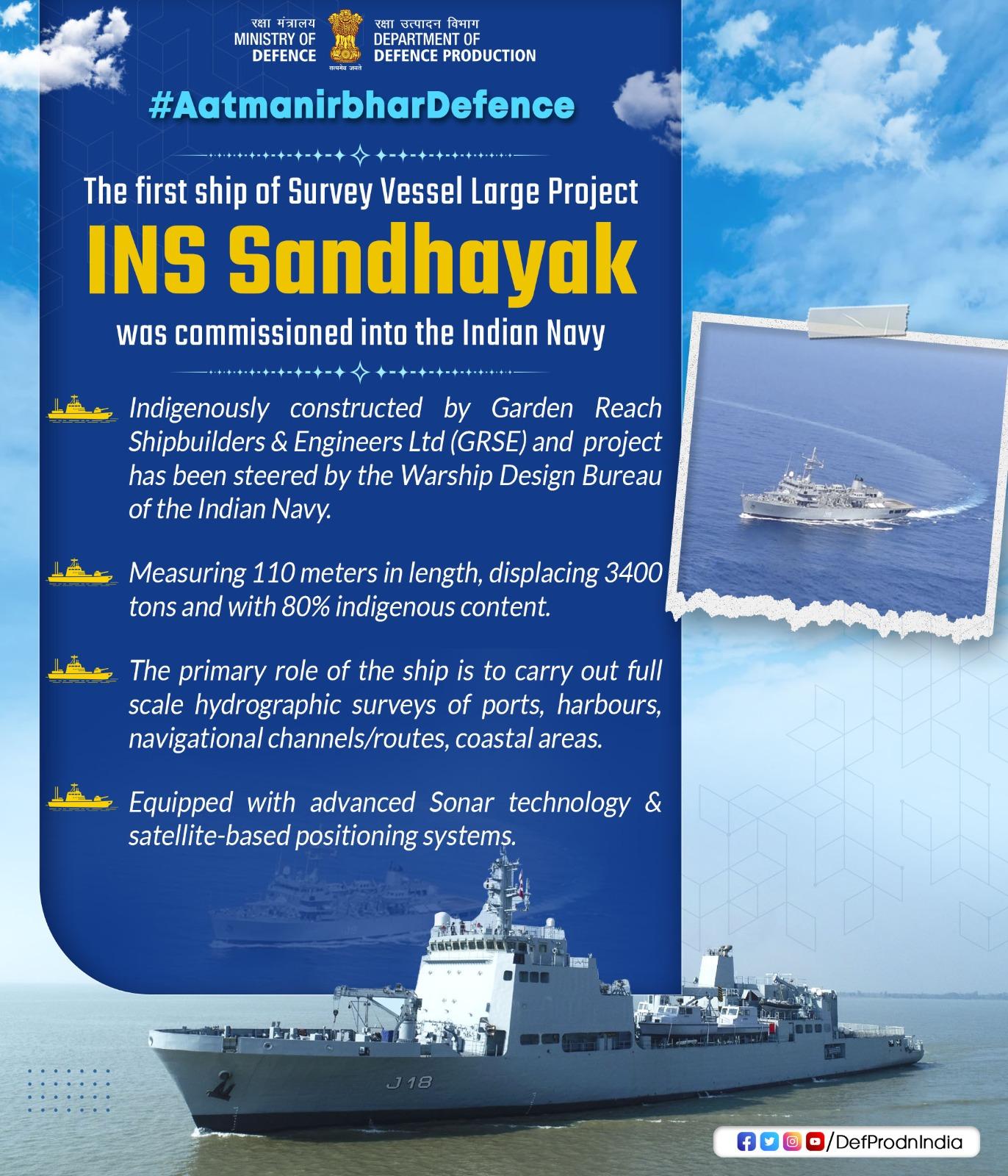
- 05 Feb 2024
Why is it in the News
Defense minister Rajnath Singh commissioned survey vessel INS Sandhayak into the Indian Navy at the Naval Dockyard recently.
About INS Sandhayak:
- INS Sandhayak stands as the first unit in a series of four Survey Vessel (Large) ships under construction at Garden Reach Shipbuilders & Engineers (GRSE), Kolkata.
- Its primary mission is to conduct thorough coastal and deep-water Hydrographic Surveys, focusing on Port and Harbour approaches, navigational channels, and routes.
- The operational scope extends to maritime limits, encompassing the Exclusive Economic Zone (EEZ) and extended continental shelf.
Features:
-
- The vessel is equipped to gather oceanographic and geophysical data, serving the needs of both defense and civil applications.
- In a secondary role, it provides limited defense capabilities and can function as a hospital ship during wartime or emergencies.
- Cutting-Edge Technology:
-
- Equipped with advanced hydrographic tools, including a Data Acquisition and Processing System, Autonomous Underwater Vehicle, Remotely Operated Vehicle, DGPS Long-range positioning systems, and Digital side-scan sonar.
- Performance Specifications:
-
- Powered by two diesel engines, INS Sandhayak boasts a speed capability exceeding 18 knots.
- With a length of 110 meters and a displacement of 3400 tons, the vessel maintains an indigenous content exceeding 80 per cent by cost.
- Historical Continuity:
-
- This ship has been re-incarnated in its current form from the previous Sandhayak, decommissioned in 2021.
Digital Detox for Responsible Gaming (TOI)

- 02 Feb 2024
Why is it in the News?
The Karnataka government recently said it would launch a 'Digital Detox' initiative in collaboration with the All India Game Developers Forum (AIGDF), with special emphasis on gaming and social media.
What is Digital Detox?
- A digital detox entails voluntarily refraining from using digital devices like smartphones, computers, and social media platforms for a defined period.
- This period can range from a few hours to as long as a week or even a month.
- Research indicates that approximately 25% of smartphone owners aged 18 to 44 cannot recall the last time they were separated from their phones.
Benefits:
- Overcoming Technology Addiction: Studies reveal that around 61% of individuals acknowledge their addiction to the internet and digital screens.
- A digital detox aids in combating this addiction.
- Enhanced Mental Health: Disconnecting from technology can alleviate stress and anxiety, thereby fostering improved mental health and overall well-being.
- Increased Productivity and Creativity: Taking a break from continuous digital engagement bolsters focus and concentration, leading to heightened productivity and creativity.
- Improved Sleep: Excessive screen time has been linked to poor sleep quality. A digital detox helps in promoting better sleep by reducing exposure to blue light and stimulating content.
- Enhanced Communication Skills: Reducing online time allows for more face-to-face interactions, nurturing better communication skills and social connections.
Challenges:
- Feelings of Disconnection: Detox participants may feel disconnected from friends and family members.
- Fear of Missing Out: Participants may experience FOMO (fear of missing out) or anxiety about missing important information.
- Boredom or Restlessness: Detoxes may lead to feelings of boredom or restlessness.
- Withdrawal Symptoms: Some individuals may experience withdrawal symptoms such as anxiety or boredom.
Way forward:
- Start Small: Initiate the detox with shorter periods and gradually extend the duration.
- Inform Others: Notify friends and family about the detox to avoid misinterpretations.
- Engage in Healthy Activities: Utilize detox time for activities like reading, spending time outdoors, or exercising.
- Minimize Notifications: Turn off device notifications and store them out of sight.
- Reward Progress: Offer yourself incentives for achieving detox goals.
Conclusion
Digital dependence can contribute to mental health issues, shorter attention spans, and strained interpersonal relationships. While technology offers convenience and connectivity, excessive screen time exacts a toll. A digital detox presents an opportunity to enhance mental and physical well-being, as well as nurture healthier relationships. With proper planning and commitment, a successful and fulfilling detox experience is achievable.
5 Wetlands Added to The Global List of Wetlands of International Importance under Ramsar Convention (TOI)
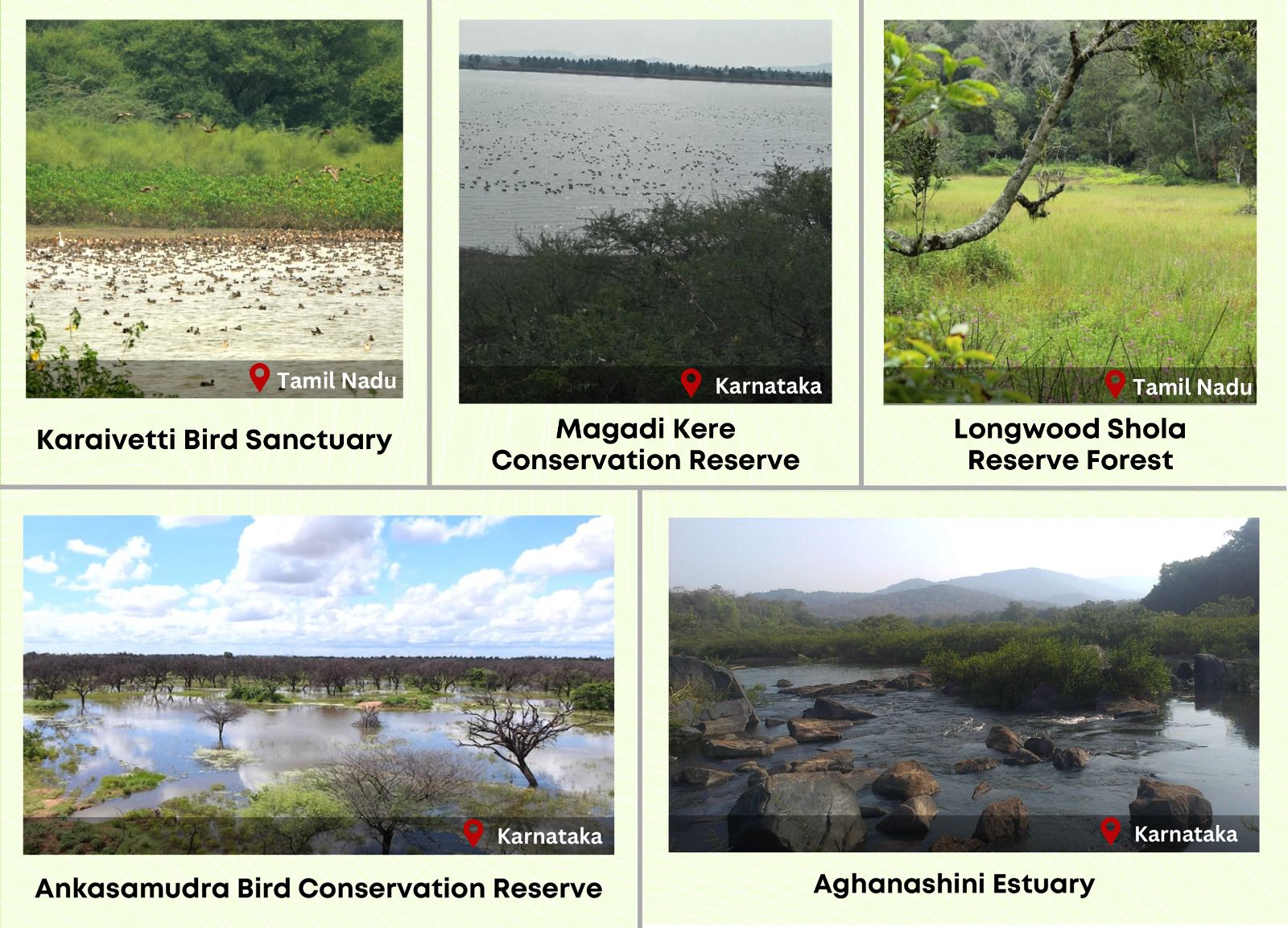
- 01 Feb 2024
Why is it in the News?
Ahead of World Wetlands Day, five more wetlands in India got the tag of international importance under the Ramsar Convention, making it the fourth largest country in terms of the number of sites on the list.
About the New Ramsar sites:
- The five newly added Indian sites in the list are Karaivetti Bird Sanctuary and Longwood Shola Reserve Forest in Tamil Nadu, and Magadi Kere Conservation Reserve, Ankasamudra Bird Conservation Reserve and Aghanashini Estuary in Karnataka.
- In India, Tamil Nadu continues to have the maximum number of Ramsar sites (16) followed by Uttar Pradesh (10).
- Karaivetti Bird Sanctuary (Tamil Nadu): Karaivetti Bird Sanctuary is one of the largest inland wetlands of Tamil Nadu and is a significant source of groundwater recharge for the area.
- Water from the wetland is utilized by the villagers for cultivating crops such as paddy, sugar cane, cotton, corn, and split red gram.
- Karaivetti has one of the largest congregations of waterbirds in the State of Tamil Nadu.
- The Longwood Shola Reserve Forest (Tamil Nadu): The Longwood Shola Reserve Forest derives its name from the Tamil word, "Solai", which means ‘tropical rainforest’.
- The ‘Sholas’ are found in the upper reaches of the Nilgiris, Anamalais, Palni hills, Kalakadu, Mundanthurai and Kanyakumari in Tamil Nadu.
- These forested wetlands serve as habitats for the globally endangered Black-chinned Nilgiri Laughing thrush (Strophocincla cachinnans), Nilgiri Blue Robin (Myiomela major), and vulnerable Nilgiri Wood-pigeon (Columba elphinstonii).
- As many as 14 out of 26 endemic bird species of the Western Ghats are found in these wetlands.
- Ankasamudra Bird Conservation Reserve (Karnataka): Ankasamudra Bird Conservation Reserve is a human made Village Irrigation Tank built centuries back and is spread over an area of 98.76ha.
- It is an ecologically important wetland, rich in biodiversity, comprising over 210 species of plants, mammal species, reptiles, birds etc.
- It supports more than 1% of the biogeographic population of Painted Stork and Black-headed Ibis.
- Aghanashini Estuary (Karnataka): Aghanashini Estuary is formed at the confluence of the Aghanashini River with the Arabian Sea.
- The brackish water of the Estuary provides diverse ecosystem services including flood and erosion risk mitigation, biodiversity conservation and livelihood support.
- The wetland also provides livelihoods to families by supporting fishing, agriculture, collection of edible bivalves and crabs, shrimp aquaculture, traditional fish farming in the estuarine rice fields (locally known as Gazni rice fields), bivalve shell collection and salt production.
- Magadi Kere Conservation Reserve (??Karnataka): Magadi Kere Conservation Reserve, is a human-made wetland with an area of nearly 50 hectares which was constructed to store rainwater for irrigation purposes.
- The wetland harbors two vulnerable species, namely the Common pochard and River tern and four near-threatened species, namely the Oriental Darter Black-headed Ibis Woolly-necked Stork and Painted Stork.
- It is also one of the largest wintering grounds for the Bar-headed goose (Anser indicus) in Southern India.
- The wetland is a designated Important Bird Area (IBA) and is also listed as a priority area for conservation in India.
What is the Ramsar Convention?
- The Ramsar Convention was signed on 2nd February 1971 to preserve the ecological character of their wetlands of international importance.
- It is named after Ramsar, the Iranian city where the treaty was signed in 1971, and places chosen for conservation under it are given the tag ‘Ramsar site’.
- The World Wetlands Day, celebrated on 2 February to raise global awareness about the importance of wetlands for human prosperity and a healthy planet.
Delhi HC Upholds Validity of Anti-profiteering Provision of CGST Act (TOI)

- 30 Jan 2024
Why is it in the News?
Delhi High Court has upheld the constitutional validity of the anti-profiteering clause in the GST law, which mandates companies to pass on the benefit of lower taxes and input tax credits to consumers.
What is an ‘Anti-profiteering’ Activity?
- Any reduction in the rate of GST tax on any supply of goods or services or the benefit of input tax credit should have been passed on to the recipient by way of a commensurate reduction in prices.
- The wilful action of not changing the final price of the good or service by various means, despite the reduction in the rate of the tax for that particular good or service, amounts to “profiteering”.
How is the Anti-profiteering Mechanism Under the CGST Act?
- CGST mandate a 3-tier structure for investigation and adjudication of the complaints regarding profiteering.
- a) National Anti-profiteering
- b) Authority Directorate General of Safeguards
- c) State-level screening committees and standing committee
How Does the Screening Committee and Standing Committee Work?
- GST council may constitute a standing committee, having members from both state and central government.
- Every state shall constitute one state-level screening committee.
- It will have one member from the state government and one member from the central government as nominated by the respective appropriate authority.
- The complaints or issues of local nature will be first examined by the screening committee.
- State-level screening and standing committee will examine the complaint and determine the prime facie evidence to support the validity of the complaint.
- If any committee satisfies that the supplier has contravened section 171 of the CGST Act, the case shall be transferred to DG Safeguards for further investigation.
- The committees shall complete the investigation within a period of a month from the date of the receipt of the application.
What is the Role of DG Safeguards in the Anti-profiteering Mechanism?
- DG safeguards are the main investigation arm in the anti-profiteering mechanism.
- It can summon the interested parties make inquiries or call the relevant documents.
- It can seek help from technical experts in the due course of investigation.
- DG Safeguards shall complete the investigation within a period of three months from the date of receipt of the report from either screening or standing committee.
- The period can be extended for another three months.
Who Can File the Complaint Against Profiteering?
- Any consumer or organisation experiencing a non-reduction in the price of the goods or service despite the reduction in the rate of GST can file a complaint with proper evidence.
- Any supplier, trader, wholesaler or retailer, who could not get the benefit of input tax credit on account of a reduction in the rate of GST, can also file the complaint with proper evidence.
World's First 'Black Tiger Safari', to be Established in Odisha (TOI)
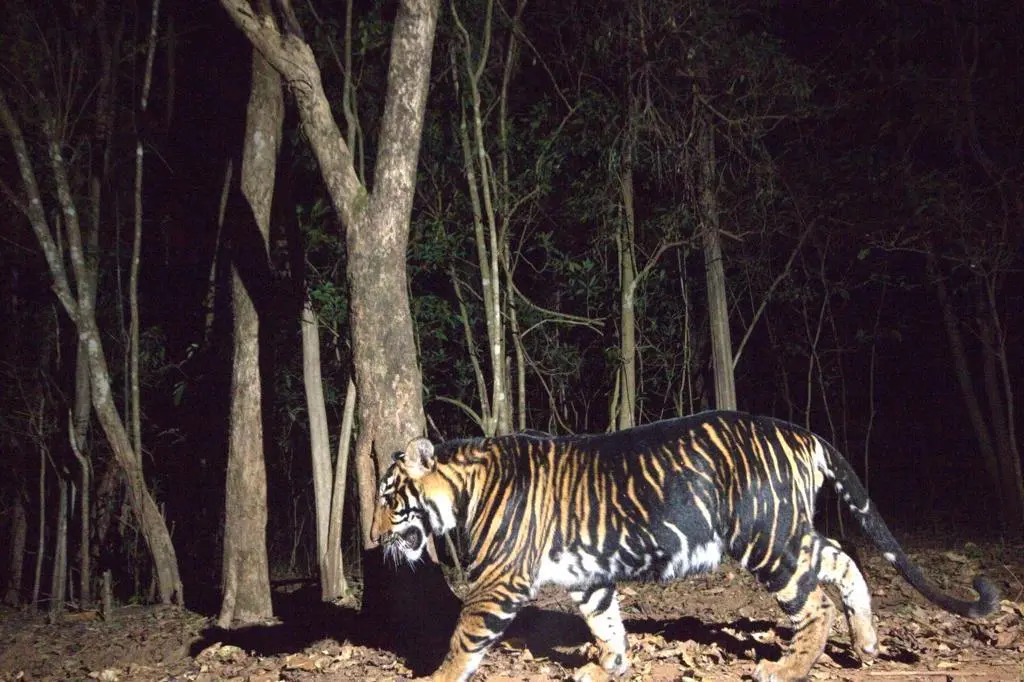
- 29 Jan 2024
Why is it in the News?
Odisha is gearing up to provide an unparalleled experience to visitors through its upcoming black tiger safari, offering a rare glimpse into the lives of these majestic creatures in their natural habitat.
What are Black Tigers or Melanistic Tigers?
- Black tigers, also known as melanistic tigers, are a unique phenomenon resulting from a genetic condition called melanism.
- Melanism causes an increased production of melanin, a pigment responsible for hair, eye, and skin colouration, resulting in black or nearly black skin, feathers, or hair in animals.
- In Simlipal Tiger Reserve, many royal Bengal tigers belong to a distinct lineage characterized by higher-than-normal levels of melanin.
- These tigers exhibit black and yellow interspersed stripes on their coats, though they are not entirely black.
- Therefore, they are more accurately described as pseudo-melanistic.
- As per the 2022 All-India Tiger Estimation, 16 tigers were recorded in Similipal Tiger Reserve, out of which 10 were melanistic.
- However, ongoing tiger surveys conducted by the state government suggest that the actual number of royal Bengal tigers in Similipal Tiger Reserve may be higher than reported by the National Tiger Conservation Authority.
- Factors Contributing to (Pseudo) Melanism:
- Research conducted by the National Centre for Biological Sciences (NCBS) in Bengaluru indicates that a single mutation in the gene Transmembrane Aminopeptidase Q (Taqpep) is responsible for the enlargement or spreading of black stripes into the yellow background of black tigers.
- Genetic analyses and computer simulations suggest that Similipal's black tigers may have originated from a very small founding population of tigers and are likely inbred.
- Additionally, the isolation of tigers in Similipal Tiger Reserve leads to breeding within the population, further contributing to the prevalence of melanism among these tigers.
About Similipal Tiger Reserve (STR):
- Similipal, which derives its name from the ‘Simul’ (Silk Cotton) tree, is a national park and a Tiger Reserve situated in the northern part of Orissa’s Mayurbhanj district.
- It spans an expansive area of 2,750 square kilometres (1,060 square miles), bordering Jharkhand and West Bengal.
- Similipal Tiger Reserve is a key component of the Mayurbhanj Elephant Reserve, which encompasses three protected areas:
- Similipal Tiger Reserve
- Hadagarh Wildlife Sanctuary, and
- Kuldiha Wildlife Sanctuary
- Biodiversity: Similipal is renowned for its rich biodiversity, boasting a diverse array of wildlife including the majestic Bengal tiger, the iconic Asian elephant, the formidable gaur, and the elusive chausingha.
- Recognized as a UNESCO World Network of Biosphere Reserves site since 2009, it stands as Asia's second-largest biosphere reserve, following the Gulf of Kachchh in Gujarat.
- Notably, Similipal Tiger Reserve holds the distinction of being the sole natural habitat in India for melanistic royal Bengal tigers, adding to its ecological significance.
'Report Fish Disease' to Monitor Fish Diseases (TOI)
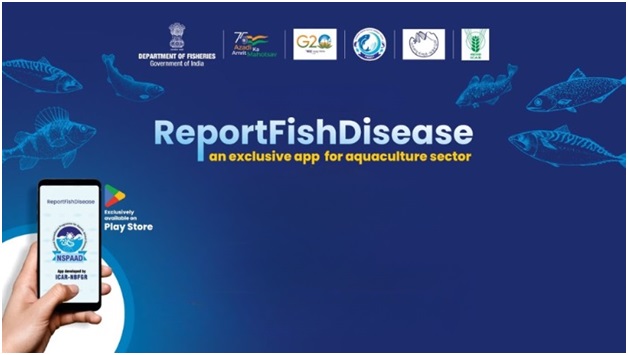
- 11 Jan 2024
Why is it in the News?
A mobile app titled ‘Report Fish Disease’ has been introduced to help aquaculture farmers to report diseases on their farms.
What is the 'Report Fish Disease' App?
- The mobile application is designed to empower fish farmers by offering a convenient and effective platform for reporting diseases on their farms.
- Developed as part of the NSPAAD project, with the lead institute being ICAR-NBFGR and a collaborative partnership with the Central Institute of Fisheries Technology (CIFT), this app brings a host of features and benefits.
Key Features:
- User-Friendly Interface: The app provides fish farmers with an intuitive and user-friendly interface, ensuring easy accessibility.
- Efficient Disease Reporting: A simplified reporting format allows farmers to easily report disease outbreaks by providing essential information such as location, affected species, observed symptoms, and images.
Significance:
- Swift Response through Geo-tagging: Utilizing geo-tagging technology, the app facilitates a rapid response from authorities.
- Farmers receive real-time updates on the status of their reported cases, ensuring transparency and accountability in disease management.
- Information Hub: Beyond reporting, the app serves as an information hub, offering farmers valuable resources on disease prevention, treatment, and best aquaculture practices.
- Comprehensive Disease Management: The app is a comprehensive package aimed at diagnosing, preventing, controlling, and treating aquatic animal diseases.
- It provides solutions to encourage aquaculture farmers to maintain the health of their stocks.
Anticipated Impact:
- By transforming disease management in aquaculture, the app aims to enhance the sustainability and productivity of this critical sector.
- It achieves this through early disease detection, data-driven decision-making, capacity building, and efficient resource allocation.
The ultimate goals of the app include:
- Improved Livelihood: Enhancing the livelihood of fish farmers through proactive disease management.
- Food Security: Safeguarding the nation’s food security by ensuring the health and well-being of aquatic animal stocks.
- Industry Growth: Contributing to the sustainable growth of the aquaculture industry by fostering a proactive approach to disease prevention and management.
Isro’s futuristic fuel cell system could power space station (TOI)

- 06 Jan 2024
Why is it in the News
Recently, a futuristic fuel cell-based power system was successfully tested by Indian Space Research Organisation (ISRO) to provide a sustainable and reliable power source for space stations.
What is a Fuel Cell?
- Fuel cells, intricate devices powered by chemical reactions, have diverse applications spanning transportation, industrial sectors, commercial and residential buildings, and reversible grid energy storage systems.
- Operationally, fuel cells consist of two electrodes—an anode and a cathode—immersed in an electrolyte.
- The anode, supplied with hydrogen fuel, undergoes oxidation to produce hydrogen ions and electrons.
- Simultaneously, the cathode, exposed to an oxidizer like oxygen, results in the production of water as hydrogen ions absorb electrons.
- The voltage per unit cell is determined by the energy level disparity at the electrodes. While a single fuel cell generates a modest amount of direct-current electricity, practical use often involves assembling stacks of these cells.
- Advantages: Advantages of fuel cells include lower or zero emissions, particularly with hydrogen fuel cells emitting only water, addressing climate concerns by avoiding carbon dioxide emissions.
- They operate quietly with few moving parts, achieve higher efficiencies compared to combustion engines, and resemble batteries but offer prolonged electrical energy due to continuous external fuel and air/oxygen sources.
- This longevity distinguishes them from batteries that rely on finite fuel material and oxidant, making fuel cells a sustainable and efficient choice for various applications.
About ISRO:
- The Indian Space Research Organization (ISRO) is the pioneer space exploration agency of the Government of India, headquartered at Bengaluru.
- ISRO was formed in 1969 with a vision to develop and harness space technology in national development, while pursuing planetary exploration and space science research.
- ISRO replaced its predecessor, INCOSPAR (Indian National Committee for Space Research), established in 1962 by India’s first Prime Minister Pt. Jawaharlal Nehru and scientist Vikram Sarabhai, considered amongst the founding fathers of the Indian space program.
BRO Implements Indigenous Technology for Road Construction Near China Border in Arunachal Pradesh (TOI)

- 06 Jan 2024
Why is it in the News
In order to improve operational capacity of the defence forces in the high-altitude areas along the Indo-China border in Arunachal Pradesh, the BRO will build bituminous roads using an indigenous technology, “Rejupave” developed by India’s oldest and premier road research organisation, CSIR-Central Road Research Institute (CSIR-CRRI).
What is Rejupave Technology?
- CSIR-Central Road Research Institute (CSIR-CRRI), India's oldest road research organization, developed the Rejupave Technology.
- It is beneficial for constructing high-altitude bituminous roads in low and sub-zero temperatures.
- The technology actively reduces production and rolling temperatures of bituminous mixes by 30 to 400 degrees Celsius, ensuring minimal heat loss during transit in snowy conditions and long haulage times.
- The bio-oil-based asphalt modifier of this technology significantly lowers the heating requirements of bituminous mixes and preserves mix temperature during transit.
- In cold climatic regions, the 'Rejupave' asphalt modifier enhances long-term durability and resistance to thermal cracking under low-temperature conditions.
- Additionally, it plays a crucial role in reducing greenhouse gas emissions in the eco-sensitive mountainous environment of Arunachal Pradesh.
About CSIR-Central Road Research Institute (CRRI):
- Established in 1952, CSIR-Central Road Research Institute (CRRI) stands as a premier national laboratory under the Council of Scientific and Industrial Research (CSIR).
- CRRI's major research and development programs encompass a range of projects, including the design, construction, and maintenance of roads and runways, traffic and transportation planning for large and medium cities, management of roads in diverse terrains, improvement of marginal materials, utilization of industrial waste in road construction, and landslide control.
- The institute extends its expertise by providing technical and consultancy services to various organizations both within India and internationally.
- CRRI actively contributes to capacity building in highway engineering, empowering human resources to undertake and execute road and runway projects.
AERA Warns Indian Airport Operators Against Charging Unapproved Tariffs (TOI)

- 13 Oct 2023
Why in the News?
The Airport Economic Regulatory Authority (AERA) issued a warning to major airports about levying aeronautical charges without approval.
About Airports Economic Regulatory Authority (AERA):
- Airports Economic Regulatory Authority (AERA), established under the Airports Economic Regulatory Authority of India Act, 2008, is a statutory body entrusted with the crucial task of regulating tariffs and associated charges for aeronautical services at major airports.
- This includes overseeing air traffic management, aircraft landing and parking, and ground handling services.
- The designation of an airport as "major" hinges on the 2008 Act, considering an annual passenger traffic threshold of at least 15 lakh.
- An amendment in 2019 elevated this criterion to 35 lakh annual passengers.
- For other airports, tariff determination falls under the purview of the Airports Authority of India (AAI).
- As an independent economic regulator, AERA operates with the objective of creating an equitable playing field, fostering healthy competition among major airports, promoting investment in airport facilities, and ensuring transparent regulation of aeronautical service tariffs.
- This initiative arose from the recognition of the need for an independent regulatory body capable of safeguarding the interests of both service providers and consumers.
- Headquartered in Delhi, AERA's history traces back to a time when most Indian airports were under the governance of the central government.
- The shift towards private sector participation in airport infrastructure development prompted the need for a distinct regulator.
- The Naresh Chandra Committee set up in 1997, recommended the establishment of an independent regulatory authority.
- Subsequently, the Airports Economic Regulatory Authority of India Act, 2008 (AERA Act), was enacted, leading to the creation of AERA.
About Airports Authority of India (AAI):
- Airports Authority of India (AAI), established through an Act of Parliament on April 1, 1995, resulted from the merger of the National Airports Authority and the International Airports Authority of India.
- Entrusted with a significant role, AAI is responsible for creating, upgrading, maintaining, and managing civil aviation infrastructure both on the ground and in the airspace of the country.
- Main Functions of AAI Include
- Construction, modification, and management of passenger terminals.
- Development and management of cargo terminals.
- Development and maintenance of apron infrastructure, encompassing runways, parallel taxiways, aprons, etc.
- Provision of Communication, Navigation, and Surveillance, involving DVOR / DME, ILS, ATC radars, visual aids, etc.
- Provision of air traffic services.
- Provision of passenger facilities and related amenities at its terminals.
Mukundra Hills Tiger Reserve in Rajasthan Now Opens for Safari Tours (TOI)
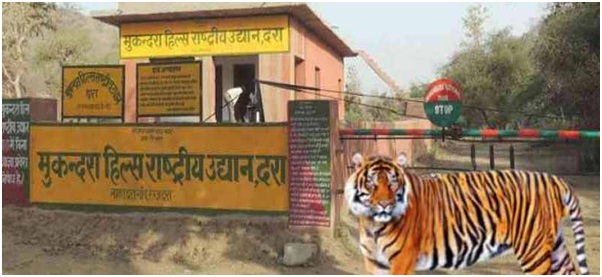
- 10 Oct 2023
Why in the News?
The forest department started the inaugural jungle safari at the Mukundra Hills Tiger Reserve on Monday, which marks the beginning of organised tiger reserve tours for tourists in four locations across the state.
About Mukundra Hills Tiger Reserve:
- Location: Mukundra Hills Tiger Reserve, also known as Darrah Wildlife Sanctuary, spans across four districts – Bundi, Kota, Jhalawar, and Chittorgarh in Rajasthan.
- The reserve is nestled in a valley formed by two parallel mountains, Mukundra and Gargola.
- Establishment: In 2013, the tiger reserve was formed, encompassing Mukandra National Park, Dara Sanctuary, Jawahar Sagar Sanctuary, and a section of Chambal Sanctuary.
- Initially, it served as a hunting preserve for the Maharaja of Kota.
- River: Positioned on the eastern bank of the Chambal River, the reserve is crisscrossed by its tributaries.
- Vegetation: The reserve features a Dry Deciduous Forest.
- Flora: The dominant species is Kala Dhok or Kaladhi (Anogeissus pendula), accompanied by Khair, Ber, Kakan, Raunj, and more.
- On elevated slopes, Anogeissus pendula gives way to Anogeissus latifolia, coexisting with Bel, Salar, Uum, and Shisham.
- Fauna: Noteworthy fauna include Leopard, Sloth bear, Nilgai, Chinkara, Spotted Deer, Small Indian Civet, Toddy Cat, Jackal, Hyena, Jungle Cat, and Common Langur, among others.
- The region is also home to various reptiles and amphibians, such as Pythons, Rat Snake, Buff-striped keelbacks, Green keelbacks, crocodiles, turtles, Gharial and Otters.
Reliance General gets ?923cr GST notices from the Directorate General of GST Intelligence (DGGI) (TOI)

- 09 Oct 2023
Why in the News?
Reliance General Insurance Company (RGIC), a subsidiary of the Anil Ambani-led Reliance Capital, has received multiple show-cause notices worth Rs 922.58 crore from the Directorate General of GST Intelligence (DGGI).
About Directorate General of GST Intelligence (DGGI):
- Formerly known as the Directorate General of Central Excise Intelligence (DGCEI), the Directorate General of GST Intelligence (DGGI) stands as a premier intelligence organization operating under the Central Board of Indirect Taxes & Customs, within the Department of Revenue, Ministry of Finance.
- Its primary focus is on collecting, collating, and disseminating intelligence pertaining to Goods and Services Tax (GST) evasion and duties related to Central Excise and Service Tax on a pan-India basis.
- Evolution: Originally designated as the Directorate General of Anti-Evasion (DGAE), it was established in 1979 as an independent wing under the Directorate of Revenue Intelligence, New Delhi.
- Became a full-fledged Directorate in 1983, headed by a Director.
- In 1988, attained the status of Directorate General under a Director General.
- Currently comprises 04 offices of the Director General (East, West, North, and South), 26 Zonal Units, and 40 Regional Units.
Key Responsibilities:
- Intelligence Gathering: Collects information from various sources, including GST returns, financial statements, and other documents, to identify potential GST law violations.
- Investigation: Empowered to conduct investigations into suspected cases of GST evasion or non-compliance, involving summoning individuals, examining records, and executing searches and seizures.
- Enforcement: Enforces provisions of the GST law, taking legal action against offenders, imposing penalties, and recovering taxes or duties owed.
- Additional Functions: Collaborates with agencies like the Central Board of Indirect Taxes and Customs (CBIC) and State GST authorities for effective GST law implementation.
- Plays a crucial role in raising awareness about GST compliance and educating taxpayers on their legal obligations.
- Provides technical and legal assistance to field officers and other government entities involved in GST administration.
Angkor Wat Temple (TOI)

- 30 Nov 2023
Why is it in the News?
Angkor Wat, in the heart of Cambodia, has beaten Pompeii in Italy to become the eighth Wonder of the World.
About Angkor Wat Temple:
- Angkor Wat is among the most significant archaeological sites of Southeast Asia, located in the northern province of Siem Reap in Cambodia.
- The temple was constructed by the Khmer King Suryavarman II in the early 12th century.
- It was originally built as a Hindu temple, dedicated to Lord Vishnu by the Khmer Emperor Suryavarman II, it was converted into a Buddhist temple by his successor Jayavarman VII, who also built the famous Buddhist temple of Bayon nearby.
- The transition from Hinduism to Buddhism is evident in the intricate carvings that adorn the temple walls, depicting scenes from Hindu and Buddhist mythology.
- An interesting fact about Angkor is that it is also known as Yasodharapura.
- The name Angkor is derived from nokor, a Khmer word meaning "kingdom," which is derived from Sanskrit nagara, which means "city."
- Angkor Wat is said to represent Mount Meru, the home of the gods, according to both Hindu and Buddhist faiths.
- It is also famous for its statue of eight-armed Vishnu, also revered by the locals as their protecting deity.
- It holds the Guinness World Record for being the largest religious structure in the world, spread across some 400 km sq.
- In 1992 the temple complex was named a UNESCO World Heritage site.
Swine Flu (TOI)

- 29 Nov 2023
Why is it in the News?
UK public health officials recently said they had confirmed a first human case of a swine flu strain similar to one that has been circulating in pigs.
About Swine Flu:
- Swine flu, scientifically known as H1N1 influenza, is a contagious respiratory illness caused by the H1N1 virus that commonly affects pigs.
- However, this virus can also infect humans, leading to a range of symptoms from mild to severe, and in some cases, it can be fatal.
- The virus spreads among humans through respiratory droplets produced when an infected person coughs or sneezes, making it highly transmissible.
- Swine flu symptoms resemble those of seasonal influenza, including fever, cough, sore throat, body aches, and fatigue.
- In severe cases, individuals may experience respiratory distress and pneumonia.
- One of the distinctive features of the H1N1 virus is its ability to affect younger age groups more severely compared to typical seasonal flu viruses.
- The World Health Organization declared a global pandemic of H1N1 influenza in 2009, emphasizing the need for international cooperation in monitoring and controlling the spread of the virus.
- Oseltamivir is an antiviral medication used to treat and prevent influenza A and influenza B.
Kalakkad Mundanthurai Tiger Reserve (TOI)
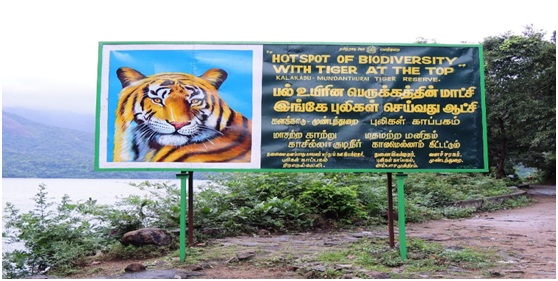
- 28 Nov 2023
Why is it in the News?
Recently a new plant species belonging to the 'Impatiens' genus (Balsaminaceae) has been identified in the Kalakkad Mundanthurai Tiger Reserve, Tirunelveli.
About Kalakkad Mundanthurai Tiger Reserve:
- The Kalakkad Mundanthurai Tiger Reserve, is situated in the Southern Western Ghats within the Tirunelveli and Kanyakumari districts of Tamil Nadu.
- This reserve combines three major sanctuaries:
- The Kalakkad Sanctuary
- The Mundanthurai Sanctuary, and
- A portion of the Kanyakumari Sanctuary.
- The Agasthyamalai Hills, nestled between Kerala and Tamil Nadu, forms the sanctuary's core and is part of one of the world's 18 biodiversity hotspots.
- This reserve is also recognized as the “River Sanctuary,” with 14 rivers originating from it.
- Flora: The flora in this region exhibits a gradual transition from dry thorn forest to dry deciduous, moist deciduous, and a patch of West Coast wet evergreen forests at higher elevations.
- Fauna: Diverse fauna includes species such as Lion-tailed Macaque, Nilgiri Tahr, Nilgiri Pipit, Grey Headed Bulbul, Blue Winged Parakeet, and more.
Details about the New Plant Species:
- The species, named 'Impatiens Karuppusamyi,' pays tribute to S. Karuppusamy for his significant contributions to the taxonomy of South Indian angiosperms.
- This particular plant is exclusively found in the Agasthyamalai region within the southern Western Ghats.
- Belonging to the scapigerous group (stemless group), the plant is observable only during the monsoon season, lasting for a few weeks.
- Impatiens, a genus comprising over 1,000 flowering plant species, is widely distributed across tropical Africa, Madagascar, India, Sri Lanka, and China.
Digital Twins (TOI)

- 25 Nov 2023
Why is it in the News?
Recently, the Survey of India (SoI) and Genesys International, a prominent Indian mapping company, revealed a strategic collaboration for the implementation of a three-dimensional (3D) digital twin-mapping initiative in India.
About Digital Twin:
- Digital twins are digital representations of physical objects, people or processes.
- They aid decision-making through high-fidelity simulations of the twinned physical system in real-time and are often equipped with autonomous control capabilities.
- These replicas serve as dynamic and detailed counterparts, providing a real-time, data-driven simulation of their physical counterparts.
- The concept of digital twins has gained prominence with the advent of technologies like the Internet of Things (IoT), data analytics, and machine learning.
- In essence, a digital twin continuously collects and processes data from its physical counterpart, offering a comprehensive view of its behavior, status, and interactions.
- This real-time synchronization enables organizations to monitor, analyze, and understand the performance of physical assets or processes more effectively.
Applications:
- Manufacturing Sector: One primary application of digital twins is in the manufacturing sector.
- Manufacturers use digital twins to create virtual models of products and production processes.
- This allows for simulation, analysis, and optimization before physical prototypes are built, leading to reduced development costs and improved product quality.
- Healthcare: In healthcare, digital twins are employed to create personalized models of patients.
- These models, based on individual health data, help in predicting health outcomes, optimizing treatment plans, and advancing medical research.
- Transportation: Transportation industries utilize digital twins for optimizing logistics and predictive maintenance.
- For example, digital twins of aircraft engines can simulate performance under various conditions, aiding in proactive maintenance and minimizing downtime.
- Urban Planning: Urban planning benefits from digital twins by creating virtual models of entire cities.
- This assists in designing and optimizing infrastructure, managing resources efficiently, and planning for future growth and development.
- Industries: In industrial settings, digital twins of production processes enable real-time monitoring, troubleshooting, and optimization, leading to increased efficiency and reduced downtime.
Deepfakes (TOI)

- 25 Nov 2023
Why is it in the News?
The government has warned top social media and internet companies that their platforms may be temporarily suspended and even be ordered blocked in case they are unable to tackle the menace of deepfakes.
What are Deepfakes?
- The term "deepfake" combines the concepts of deep learning with the fabrication of content.
- Deepfakes involve the creation of synthetic images and audio using machine-learning algorithms, intending to disseminate misleading content by replacing a real person's appearance, voice, or both with artificially generated likenesses or voices.
- These manipulated creations can either depict nonexistent individuals or simulate real people engaging in actions or utterances they never did.
- Originating in 2017, the word "deepfake" emerged when a Reddit user named "deepfakes" shared explicit videos featuring celebrities.
- The process of crafting deepfakes utilizes machine learning models employing neural networks to manipulate visual and auditory elements.
- To generate a convincing deepfake video, creators train the neural network on extensive real footage of the targeted person, facilitating a realistic understanding of their appearance from various angles and lighting conditions.
- This trained network is then combined with computer graphics to overlay the person onto a different actor.
- Regrettably, this technology is increasingly exploited for malicious purposes, including scams, celebrity impersonation, election interference, social engineering, disinformation attacks, identity theft, and financial fraud.
- The distinguishing factor of deepfakes lies in their challenging detection due to their sophisticated nature.
Naval Anti-Ship Missile Short Range (NASM-SR) (TOI)
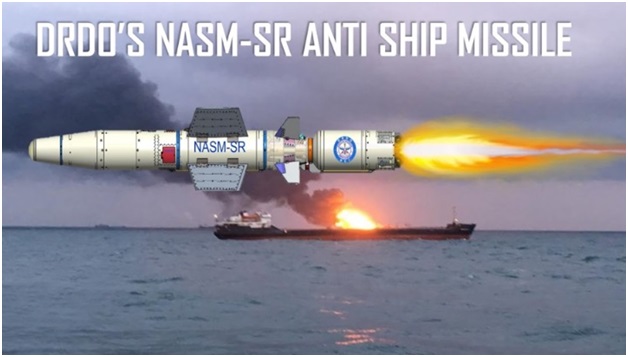
- 22 Nov 2023
Why is it in the News?
The Indian Navy successfully test-fired an indigenous anti-ship missile over the Arabian Sea, marking a significant step in India's efforts towards self-reliance in defense technologies.
About Naval Anti-Ship Missile Short Range (NASM-SR):
- This revolutionary missile NASM-SR, entirely developed by Indian scientists and engineers, represents a huge stride in the indigenization of India's defense infrastructure.
- The project is a collaborative effort between various esteemed agencies, including the Defense Research and Development Organisation (DRDO).
- The successful trial brings a sense of pride and accomplishment to India's defense realm.
- Launch Capability: This advanced missile is designed for launch from attack helicopters, presenting a versatile addition to the naval arsenal.
- Replacement for Sea Eagle: NASM-SR is slated to replace the existing Sea Eagle missiles currently in use by the Navy, aligning with the imperative of modernization and technological advancement.
- Integration with MH-60R Helicopters: As Sea King helicopters are phased out, the NASM-SR is anticipated to integrate seamlessly with the new MH-60R multi-role helicopters, a pivotal component of the Navy's evolving fleet.
Key Features:
- The missile incorporates a state-of-the-art guidance system and integrated avionics.
- It introduces indigenous launcher technology tailored for helicopter deployment.
- Possessing a striking range of approximately 60 km.
- Travels at a speed of Mach 0.8, slightly below the speed of sound.
- Equipped with a 100kg warhead, rendering it capable of neutralizing patrol boats and causing substantial damage to larger warships.
- Employs an imaging infrared seeker to target heat emissions, enhancing precision in homing onto its designated targets.
- During the approach to its target, the NASM-SR operates at just 5 meters above sea level, a strategic feature known as sea skimming.
- This low-level approach minimizes the susceptibility to detection, tracking, and interception by enemy radars or surface-to-air missiles.
Sickle Cell Disease (TOI)
- 17 Nov 2023
Why in the News?
The UK's medicines regulator has granted approval for the world's first gene therapy treatment for sickle cell disease.
What is Sickle Cell Disease?
- Sickle cell disease (SCD) is a blood disorder that is passed through the genes and results in abnormal hemoglobin.
- (Hemoglobin is a part of the red blood cells that carry oxygen through the body.)
- People with SCD have red blood cells that sickle or change shape when exposed to low oxygen levels in the cell.
- These sickled cells also become stiff and sticky compared to normal red blood cells.
- They can block blood flow, leading to tissue damage and pain.
- Over time, these blockages can lead to organ dysfunction and result in other serious medical complications.
Sickle Cell Disease Types
- There are several different forms of sickle cell disease, and it is different for each person.
- Hemoglobin SS, also known as sickle cell anemia
- Hemoglobin SC disease
- Hemoglobin sickle beta-thalassemia
- The most common and usually the most severe form is sickle cell anemia.
- The SCD type affects the severity and frequency of complications.
- The type of SCD also impacts the timing of complications.
- Some people have symptoms at a very young age while others will not show symptoms until adulthood.
Sickle Cell Disease Symptoms
- Anemia: Sickled blood cells are less able to carry oxygen, leading to anemia.
- Symptoms can include fatigue, weakness, dizziness, headache, shortness of breath and chest pain.
- Bone Pain: Decreased blood flow to the bones leads to periodic spikes in bone pain known as bone crises.
- SCD can also cause avascular necrosis, which is a breakdown of the bone and joint.
- Eye Disease or Blindness: Sickled blood cells can damage the fragile blood vessels in the back of the eye, leading to retina damage called retinopathy. This can lead to blindness.
- Infections: The spleen fails in SCD patients at a young age, decreasing the body’s ability to fight infections.
- Kidney Issues: Blood in the urine (papillary necrosis), frequent urination, kidney disease.
Treatments:
- A bone marrow transplant (stem cell transplant) can cure sickle cell disease.
- However, there are treatments that can help relieve symptoms, lessen complications, and prolong life.
- Gene therapy is also being explored as another potential cure. The UK recently became the first country to approve gene therapy treatment for sickle cell disease
Wasp-107b (TOI)

- 17 Nov 2023
Why in the News?
In its latest discovery, NASA's James Webb Space Telescope has discovered a planet "Wasp-107b" where specks of sand fall as rain.
What is “Wasp-107b”?
- WASP-107b is a warm exoplanet with Neptune’s mass and Jupiter’s radius.
- This makes it ‘fluffy’ compared to the giant gas planets in our Solar System.
- This unusual size-to-mass ratio has given astronomers a unique opportunity to probe its atmosphere roughly 50 times deeper than more dense planets like Jupiter.
- This gas giant, often referred to as a "super-Neptune," holds several remarkable characteristics that set it apart from other known exoplanets.
Key Characteristics of WASP-107b:
- Size and Mass: WASP-107b is roughly the size of Jupiter, but with only about 12% of Jupiter's mass.
- This makes it one of the least dense exoplanets ever discovered.
- Orbit and Proximity: WASP-107b orbits its host star, WASP-107, very closely, completing an orbit in just 5.7 days.
- It is located about 200 light-years from Earth in the constellation Virgo.
- Sand Rain: WASP-107b exhibits a unique water cycle similar to Earth's, but with a peculiar twist: instead of water droplets, the planet experiences sand rain.
- These sand grains, composed of silicates, rise from lower atmospheric levels and condense into clouds before falling back down.
- Atmosphere: WASP-107b possesses a puffy atmosphere, likely due to its low density.
- In 2018, scientists using the Hubble Space Telescope detected helium in its atmosphere, marking the first detection of this element in an exoplanet's atmosphere.
- Potential for Atmospheric Characterization: WASP-107b's large size and proximity to its star make it a promising target for future atmospheric characterization studies.
- Scientists hope to glean more insights into the composition and dynamics of its atmosphere.
Pradhan Mantri Kisan Samman Nidhi (PM-KISAN) Scheme (TOI)

- 16 Nov 2023
Why in the News?
Prime Minister Narendra Modi released the 15th installment of the Pradhan Mantri Kisan Samman Nidhi (PM-Kisan) scheme worth over Rs 18,000 crore to more than 8 crore farmers on November 15, 2023.
About Pradhan Mantri Kisan Samman Nidhi (PM-KISAN):
- The Pradhan Mantri Kisan Samman Nidhi (PM-KISAN) is a Central Sector scheme with 100% funding from the Government of India.
- Under the scheme, income support of Rs. 6,000 per year in three equal installments is provided to all land-holding farmer families, providing them with socio-economic security.
- The amount is directly transferred to the bank accounts of the beneficiaries without any involvement of intermediaries, making it one of the largest Direct Benefit Transfer (DBT) schemes in the world.
- So far, more than Rs. 2.42 lakh crore have been disbursed to over 11 crore farmers.
- As per the study by the International Food Policy Research Institute (IFPRI), PM-KISAN had numerous benefits for the farmers and agriculture sector.
- It addresses the liquidity constraints of farming households, enabling essential input procurement.
- The scheme boosts modern cultivar adoption through Krishi Vigyan Kendras.
- The cash transfer to farmers increases their total net income and enhances their risk-taking capacity, leading to productive investments.
- PM-KISAN has empowered the farmers by boosting agriculture investments, easing credit constraints, and spurring rural economic growth.
- Consequently, farmers have been able to invest in their farms, including purchasing seeds, fertilizers, and necessary equipment, leading to increased agricultural production and improved crop yields.
Tadoba-Andhari Tiger Reserve (TOI)
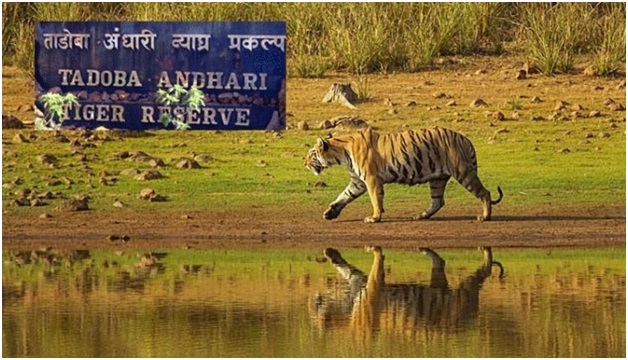
- 15 Nov 2023
Why in the News?
A dominant tiger named Bajrang said to have sired at least 50 cubs during his lifetime, recently died in a territorial fight with another powerful tiger, Chhota Matka, in the Tadoba-Andhari Tiger Reserve (TATR).
About Tadoba Andhari Tiger Reserve:
- Tadoba Andhari Tiger Reserve is the oldest and largest National Park in the Chandrapur district of Maharashtra.
- It is one of India's 47 project tiger reserves existing in India.
- The total area of the tiger reserve is 1,727 Sq.km, which includes the Tadoba National Park, created in the year 1955.
- The Andhari Wildlife Sanctuary was formed in the year 1986 and was amalgamated with the park in 1995 to establish the present Tadoba Andheri Tiger Reserve.
- The word 'Tadoba' is derived from the name of God "Tadoba" or "Taru," which is praised by local tribal people of this region, and "Andhari" is derived from the name of the Andhari river that flows in this area.
- Tadoba is presently home to more than 115 tigers, which is one of the highest in India.
- The vegetation of Tadoba forest is of Southern tropical dry deciduous type and is spread on around 626 sq. km.
- Teak is the prominent tree species in the forest.
- The Tadoba Tiger Reserve is rich in flora and fauna
- Flora: Some of the famous and widely seen flora of this park include Teak, Ain, Bija, Bamboo, Black Plum, and many others.
- Fauna: Tigers, Indian leopards, Sloth bears, Gaur, Nilgai, Striped Hyena, Spotted Deer, Barking Deer, Marsh Crocodile, etc.
Igla-S Missiles (TOI)

- 15 Nov 2023
Why in the News?
Recently, Russia has announced that it will supply the Igla-S man-portable air defense missile system to the Indian armed forces through licensed production by an Indian private company.
About Igla-S Missile System:
- The Igla-S is a man-portable air-defense system (MANPADS) developed by Russia.
- It is a surface-to-air missile (SAM) system which is also known as SA-24 Grinch in the West.
- The Igla-S entered service in 2004 and is currently in service with over 30 countries, including Russia.
- It is a highly effective and versatile weapon system that can be used to engage a wide variety of targets, including fixed- and rotary-winged aircraft, helicopters, unmanned aerial vehicles (UAVs), and cruise missiles.
- The Igla-S has a range of 5 km and an altitude of 3,500 meters including a speed of Mach 2.5.
- It is a "fire-and-forget" weapon, meaning that the operator does not need to track the target after launch.
- The missile's infrared homing seeker automatically guides it to the target.
- It is a very compact and lightweight weapon system, making it ideal for use by infantry troops.
- It can be easily transported and deployed in a matter of minutes.
- The Igla-S is used by a number of countries, including Algeria, Azerbaijan, Belarus, China, India, Iran, Iraq, Kazakhstan, Libya, Malaysia, Myanmar, Nicaragua, North Korea, Peru, Poland, Russia, Serbia, Syria, Venezuela, and Vietnam.
Phreatomagmatic Eruptions (TOI)
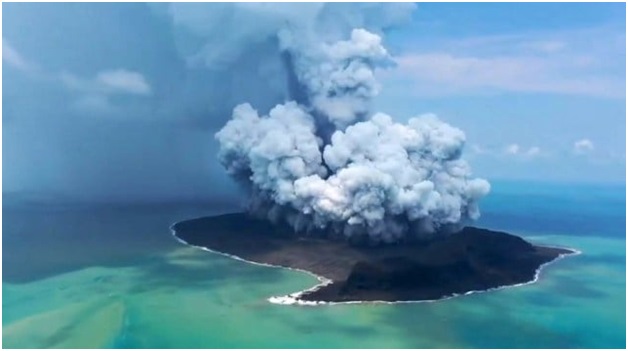
- 11 Nov 2023
Why in the News?
Recently a new island emerged near Japan's Ogasawara island chain after an undersea volcano erupted.
What is Phreatomagmatic Eruption?
- A phreatomagmatic eruption is a volcanic eruption caused by the interaction of magma and water.
- They differ exclusively from magmatic and phreatic eruptions.
- Unlike phreatic eruptions, the products of phreatomagmatic eruptions contain juvenile (magmatic) debris.
- Large explosive eruptions typically contain magmatic and phreatomagmatic components.
- Phreatomagmatic ash is formed by the same mechanism over a wide range of basic and acidic compositions.
- A blocky and uniform crust with low vesicle content is formed.
- Deposits from phreatomagmatic eruptions are thought to be better classified and finer-grained than those from magmatic eruptions.
- This is the result of higher fragmentation of phreatomagmatic eruptions.
About Ogasawara Islands:
- The Ogasawara Islands are a group of more than 30 small subtropical islands in the North-Western Pacific Ocean roughly 1,000 km south of the main Japanese Archipelago.
- It is also known as the Bonin Islands.
- It is one of the famous UNESCO World Heritage sites of Japan.
Vampire Viruses (TOI)

- 11 Nov 2023
Why in the News?
For the first time, several ‘vampire viruses have been detected in the soil samples in the USA recently.
About Vampire Viruses:
- "Vampire viruses", also known as virophages, are viruses that parasitize other viruses.
- They have been known to science for decades, but this is the first time they have been discovered in the United States.
- The viruses were found in soil samples from Maryland and Missouri.
- Virophages are thought to attach themselves to other viruses and inject their own genetic material into the host-virus.
- This genetic material then takes over the host virus's replication machinery, allowing the virophage to reproduce itself.
- The host-virus is eventually destroyed in the process.
- Virophages could be used to control harmful viruses that infect crops or livestock.
- They could also be used to design new antiviral drugs that target viruses in a more specific way than current drugs.
- However, the discovery of virophages also raises some concerns.
- Virophages could potentially kill beneficial viruses that play an important role in the environment.
- For example, some viruses help to break down organic matter in soil, while others help to control populations of harmful bacteria.
Palamu Tiger Reserve (TOI)

- 09 Nov 2023
Why in the News?
A recently captured image in the Palamu Tiger Reserve (PTR) reveals a new tiger, distinct from the one caught earlier this year.
About Palamau Tiger Reserve:
- The Palamau Tiger Reserve is located on the western side of Latehar district on the Chhotanagpur plateau in Jharkhand.
- It is one of the first 9 tiger reserves established in the country at the inception of ‘Project Tiger’, in the year 1973 in India and the only one in the state of Jharkhand.
- This reserve forms a part of the Betla National Park.
- The total area of the Tiger Reserve is 1129.93 sq. km
- It is the first reserve in the world in which a tiger census was carried out as a pugmark count, as early as 1932 under the supervision of J.W. Nicholson.
- The Palamau Tiger Reserve is very important for its biodiversity.
- The project area is constituted mainly of Sal forests, mixed deciduous forests, and bamboo groves.
- The reserve zone is the watershed area for 3 important rivers Koel, Burha, and Auranga.
GST Amnesty Scheme (TOI)
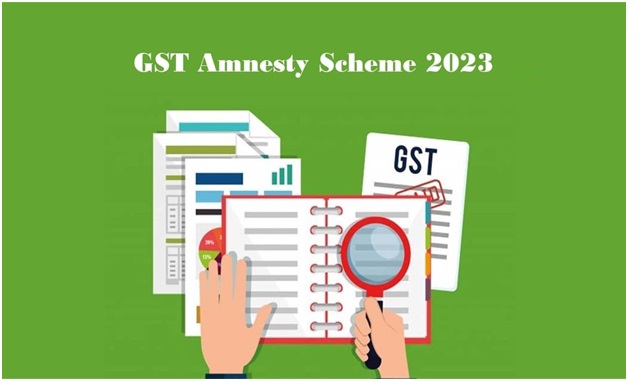
- 06 Nov 2023
Why in the News?
The finance ministry has come out with an amnesty scheme for filing appeals against Goods and Services Tax (GST) demand orders.
What is the GST Amnesty scheme?
- The GST Amnesty scheme was introduced by the Centre to help businesses comply with the Goods and Services Tax laws in the country.
- Every entity that needs to file its GST returns must conduct the process in a sequential manner.
- If the taxpayer misses the last date, they may have to pay penalties for not filing the returns.
- In such a situation, the GST Amnesty scheme helps taxpayers file their returns without hefty penalties.
- The plan also aids businesses whose registration stands canceled for non-filing of returns.
- Under the GST Amnesty scheme, taxpayers can file for the revocation of their cancellation as well.
How can one benefit from the GST Amnesty scheme?
- Taxpayers cannot file the GST return for a particular period without submitting the previous ones.
- A heavy penalty will also be levied on them for missing their filings.
- The GST Amnesty scheme allows taxpayers to file their pending returns without incurring a hefty fine.
- It will help them in complying with the indirect taxation laws of the country.
- It also aids business entities to appeal against the cancellation of their registration if they have not submitted the GST returns for three consecutive quarters.
- The scheme will be open till January 31, 2024.
Pavana River (TOI)
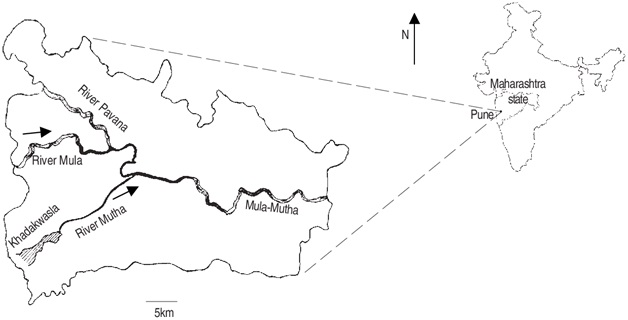
- 04 Nov 2023
Why in the News?
Recently residents of Thergaon area in Pune, are worrieda a lot owing to the thick layer of toxic foam on Pavana river near Kejudevi temple.
About the Pavana River:
- Location: The Pavana River is in the western part of Maharashtra, specifically in the Pune District.
- It crosses Pune City and acts as a natural boundary between Pune City and the Pimpri-Chinchwad area.
- Origin: The river begins in the Western Ghats, approximately 6 kilometers south of Lonavala.
- It's a tributary of the Bhima River and meets the Mula River within Pune city.
- Initially flowing east, it turns south and passes through the suburbs of Dehu, Chinchwad, Pimpri, and Dapodi before joining the Mula River.
- There is a dam is built on this river at Pavana Nagar, called the "Pavana Nagar Dam".
- The Pavana Nagar Dam is an earthfill gravity dam.
- It's 1,329 meters (4,360 feet) long and 42.37 meters (139.0 feet) high.
- The dam has a total storage capacity of 30,500.00 cubic kilometers.
- Its main purpose is to supply sufficient water to the nearby areas and is a crucial water source for the region.
UN Office for the Coordination of Humanitarian Affairs (OCHA) (TOI)

- 03 Nov 2023
Why in the News?
??The UN Office for the Coordination of Humanitarian Affairs (OHCA), on Friday, launched an emergency aid appeal seeking $1.2 billion to help some 2.7 million people in Gaza and the West Bank.
About the UN Office for the Coordination of Humanitarian Affairs (OCHA):
- OCHA is part of the United Nations (UN) and focuses on humanitarian issues.
- It coordinates and leads UN responses to humanitarian crises worldwide.
- It was established by the General Assembly of the United Nations in 1991.
- OCHA's goal is to save lives, protect people, and help those affected by disasters and conflicts.
- It works with governments, non-governmental organizations (NGOs), and other partners to respond to emergencies.
- It provides funding to support relief efforts in crisis-affected regions.
- There are two types of pooled funds:
- The Central Emergency Response Fund (CERF) can provide financial support for emergencies anywhere on the globe.
- Country-Based Pooled Funds (CBPFs) are specific to individual countries.
- These funds operate from two central hubs located in Geneva and New York, serving as global operational centres.
- The office works to ensure that humanitarian aid reaches those in need.
- It has two headquarters locations, Geneva and New York, which act as centres of global operations.
- It helps plan and manage humanitarian responses, ensuring efficiency and effectiveness.
- OCHA promotes coordination among humanitarian organizations to avoid duplication and ensure better outcomes.
Black Stork (TOI)
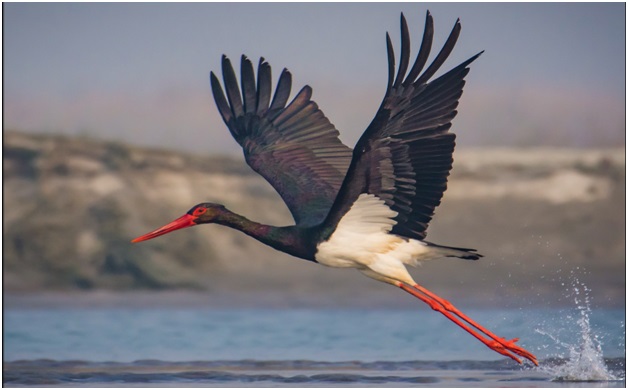
- 01 Nov 2023
Why in the News?
For the first time, a Black Stork, a species rarely seen, has been spotted in the Hastinapur Wildlife Sanctuary in Uttar Pradesh recently.
About Black Stork:
- The black stork (Ciconia nigra) is a large bird in the stork family Ciconiidae.
- It is usually found in marshy areas, rivers or inland waters.
- It is a long-distance migrant, with European populations wintering in tropical Sub-Saharan Africa, and Asian populations in the Indian subcontinent.
- The black stork is considered to be a species of least concern by the International Union for Conservation of Nature, but its actual status is uncertain.
- Despite its large range, it is nowhere abundant, and it appears to be declining in parts of its range, such as in India, China and parts of Western Europe, though increasing in others such as the Iberian Peninsula.
- Various conservation measures have been taken for the black stork, like the Conservation Action Plan for African black storks by Wetlands International.
- It is also protected under the African-Eurasian Waterbird Agreement and the Convention on International Trade in Endangered Species of Wild Fauna and Flora.
Spike Non-Line of Sight (NLOS) Anti-tank Guided Missiles (TOI)

- 05 Aug 2023
Why in the News?
Israel's Spike Non-Line of Sight (NLOS) anti-tank guided missiles were recently delivered to the Indian Air Force.
About the Spike Non-Line of Sight (NLOS) Anti-tank Guided Missile:
- The Spike Non-Line of Sight (NLOS) Anti-tank Guided Missile (ATGM) is a sophisticated fire-and-forget missile designed for anti-tank and anti-personnel purposes.
- It features a tandem-charge high-explosive warhead.
- Developed by Rafael Advanced Defense Systems, an Israeli defense technology company, the Spike NLOS ATGM comes in man-portable, vehicle-launched, and helicopter-launched variants.
- The missile is currently in use by the defense forces of Israel and 38 other countries, including India, Netherlands, Germany, Italy, Peru, Spain, Belgium, Brazil, Canada, the UK, Philippines, and Singapore.
- Key features of the Spike NLOS ATGM:
- Striking range of up to 30 kilometers
- Weight of 71 kg, and
- An electro-optical seeker that offers superior target visibility compared to radar or infrared-guided missiles.
- The missile's seeker is equipped with a datalink, enabling the launch operator to maintain control over the missile during flight.
- This capability allows for precise targeting, including attacking different parts of a tank or engaging an alternative target, or aborting the strike if necessary.
- The Spike NLOS ATGM can be armed with various types of warheads, making it versatile for destroying tanks, and air defense systems, or for use in urban combat scenarios.
Indian National Space Promotion and Authorisation Centre (IN-SPACe) (TOI)

- 04 Aug 2023
Why in the News?
The Indian National Space Promotion and Authorisation Centre (IN-SPACe) has reported that three private sector satellite manufacturers plan to launch their earth observation satellites during this fiscal year.
About Indian National Space Promotion and Authorisation Centre (IN-SPACe):
- IN-SPACe serves as a single-window, independent, and autonomous agency within the Department of Space (DOS).
- It was established as part of the Space sector reforms to encourage and facilitate the active involvement of private players in the space industry.
- IN-SPACe's responsibilities include promoting, enabling, authorizing, and supervising various space activities of non-governmental entities, such as manufacturing launch vehicles and satellites, providing space-based services, and utilizing space infrastructure and facilities.
- Acting as an intermediary between ISRO and Non-Governmental Entities (NGEs), the agency assesses opportunities for leveraging India's space resources effectively and enhancing space-based initiatives.
- Also, IN-SPACe addresses the specific needs and demands of private players, including educational and research institutions, while working in collaboration with ISRO.
- The headquarters of IN-SPACe is located in Bopal, (Ahmedabad).
Yak Churpi (TOI)

- 06 Oct 2023
Why in the News?
Arunachal Pradesh, a northeastern state, achieved a noteworthy milestone as the distinctive and culturally important yak milk product known as 'Yak Churpi' has received the prestigious Geographical Indication (GI) tag.
About 'Yak Churpi':
- Yak Churpi is a special dairy product crafted from the milk of the indigenous Arunachali yak breed.
- It's produced by Brokpas, tribal yak herders who migrate with their yaks to higher altitudes (above 10,000 ft) during summers and return to mid-altitude mountainous areas in winters.
- These exceptional yaks are primarily found in the West Kameng and Tawang districts of Arunachal Pradesh.
- Churpi is a naturally fermented dairy item with a high protein content.
- It plays a vital role in the diets of tribal communities living in the cold, mountainous regions of the state.
- It's often used as a vegetable substitute and is a common ingredient in vegetable and meat dishes, frequently enjoyed with rice.
- The GI tag for Yak Churpi has significant benefits, including the conservation of yaks and the improvement of the socio-economic status of yak herders.
- Arunachali yaks are unique in terms of their body characteristics, size, strain, and weight, making them the only registered yak breed in India.
Sela Tunnel Project (Times of India)
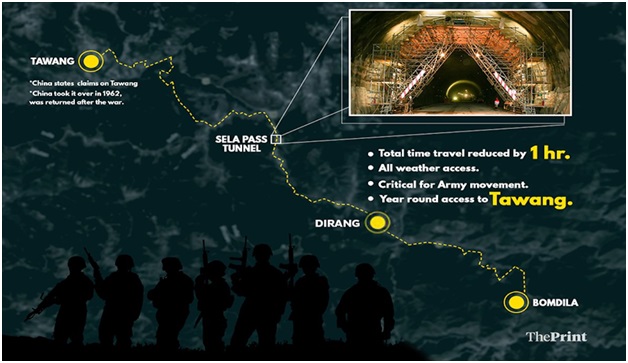
- 02 Oct 2023
Why in the News?
The officials from BRO (Border Roads Organization) recently announced that they have almost finished about 96 percent of the work on the strategically important Sela Tunnel. It's expected to be officially opened by the end of this year.
About Sela Tunnel Project:
- Location: Situated in the West Kameng district of Arunachal Pradesh.
- When it's finished, the Sela tunnel will be the world's longest two-lane tunnel, located at an altitude above 13,000 feet.
- Its purpose is to provide year-round connectivity between Guwahati in Assam and Tawang in Arunachal Pradesh.
- This tunnel is being constructed underneath the Sela Pass as part of NH-13, a segment of the Trans-Arunachal Highway system.
- The Border Roads Organisation (BRO) is responsible for its construction under Project Vartak, which began on April 1, 2019.
- Project Details:
- Tunnel 1: This tunnel is 980 meters long and has a single tube.
- Tunnel 2: A two-lane tunnel that spans 1555 meters, equipped with an emergency escape tunnel.
- Roads: The road leading to Tunnel 1 is 7100 meters long, the road connecting the two tunnels is 1340 meters long, and the road leading to Tunnel 2 is 340 meters in length.
Terai-Arc Landscape (TAL) (Times of India)
- 28 Aug 2023
What is the News ?
Recently, the poop of tigers has helped a team of scientists at the Wildlife Institute of India (WII) understand the prey selection patterns of the striped feline in the Indian part of the Terai-Arc Landscape.
Facts About:
- It is an 810km stretch between the river Yamuna in the west and the river Bhagmati in the east.
- It comprises the Shivalik hills, the adjoining bhabhar areas and the Terai flood plains.
- It is spread across the Indian states of Uttarakhand, Uttar Pradesh, Bihar, and the low-lying hills of Nepal.
- About 22% of the wild tiger population in India is found across the TAL, living amidst some of the highest human and livestock densities on the subcontinent.
- The landscape boasts of some of India’s most well-known Tiger Reserves and Protected Areas, such as Corbett Tiger Reserve, Rajaji National Park, Dudhwa Tiger Reserve, Valmiki Tiger Reserve and Nepal’s Bardia Wildlife Sanctuary, Chitwan National Park, Sukhla Phanta Wildlife Sanctuary.
- These forests are home to three flagship species: the Bengal tiger(Panthera tigris), the greater one-hornedrhino (Rhinoceros unicornis) and the Asian elephant (Elephas maximus).
Key Facts about the Wildlife Institute of India
- It is an autonomous Institution of the Ministry of Environment, Forest and Climate Change, Government of India.
- It was established in 1982.
- It offers training programs, academic courses and advisory in wildlife research and management.
- The Institute is actively engaged in research across the breadth of the country on biodiversity-related issues.
Source: https://timesofindia.indiatimes.com/city/dehradun/10-tiger-corridors-across-india-need-attention-experts/articleshow/95518729.cms
